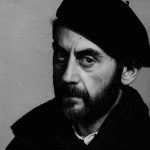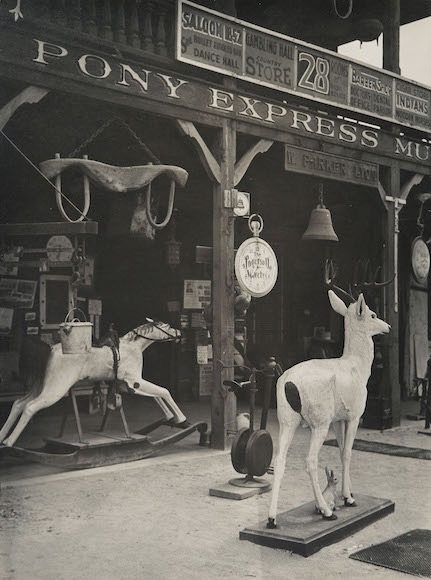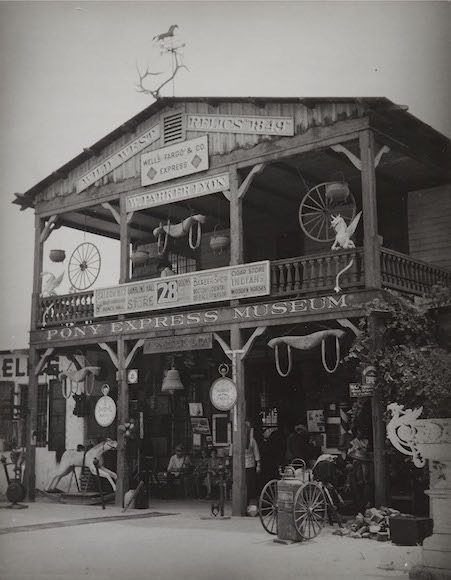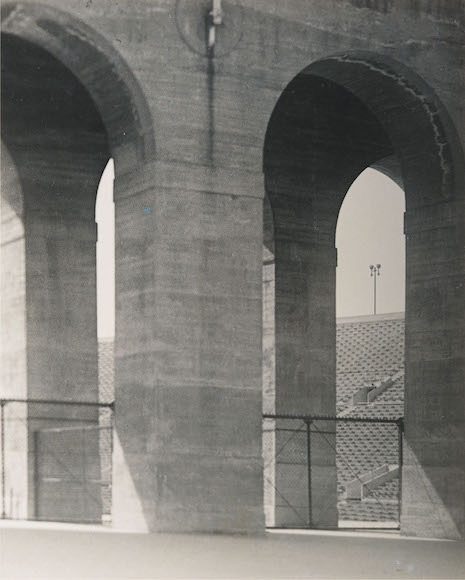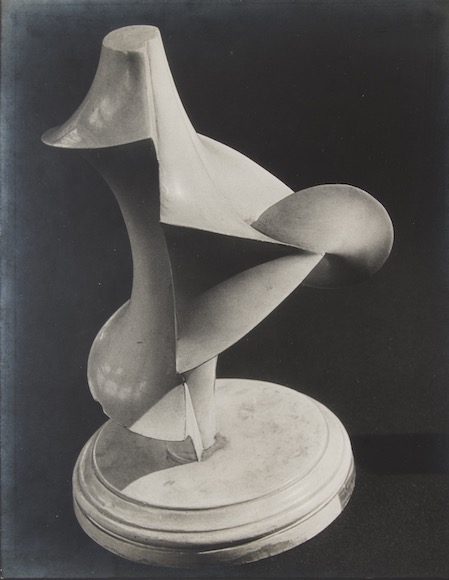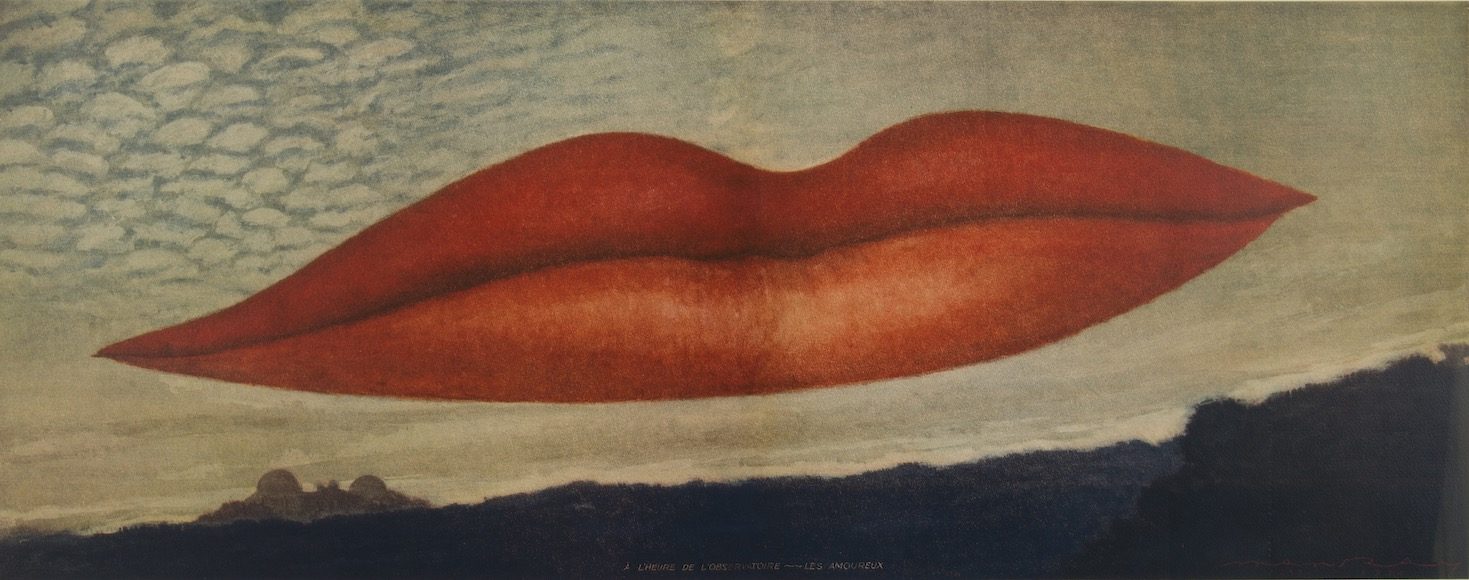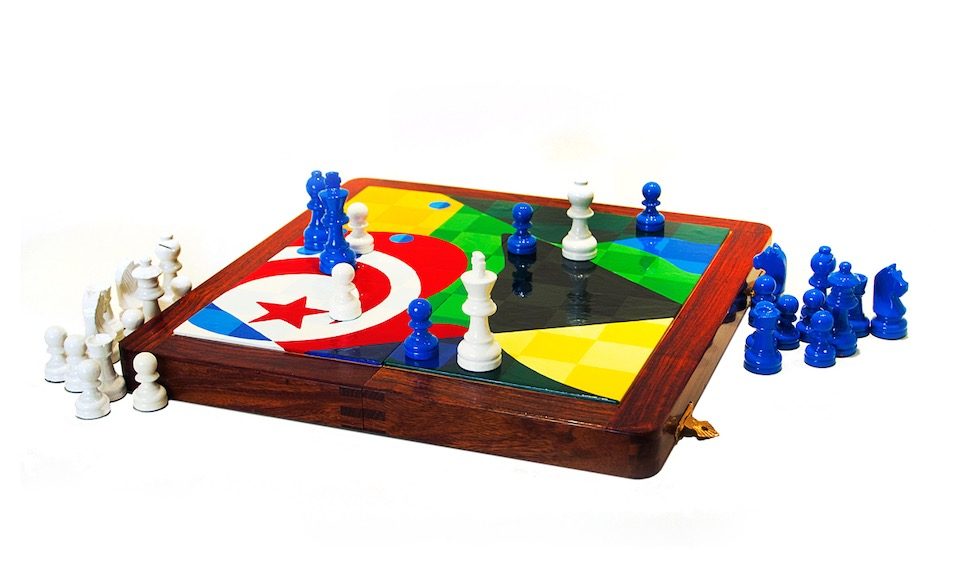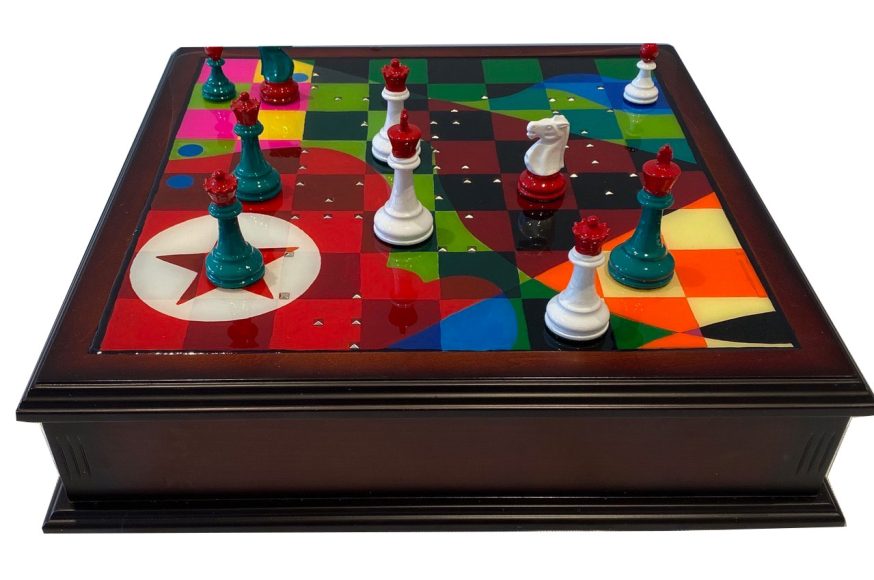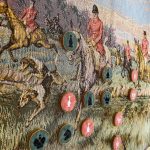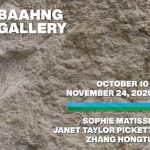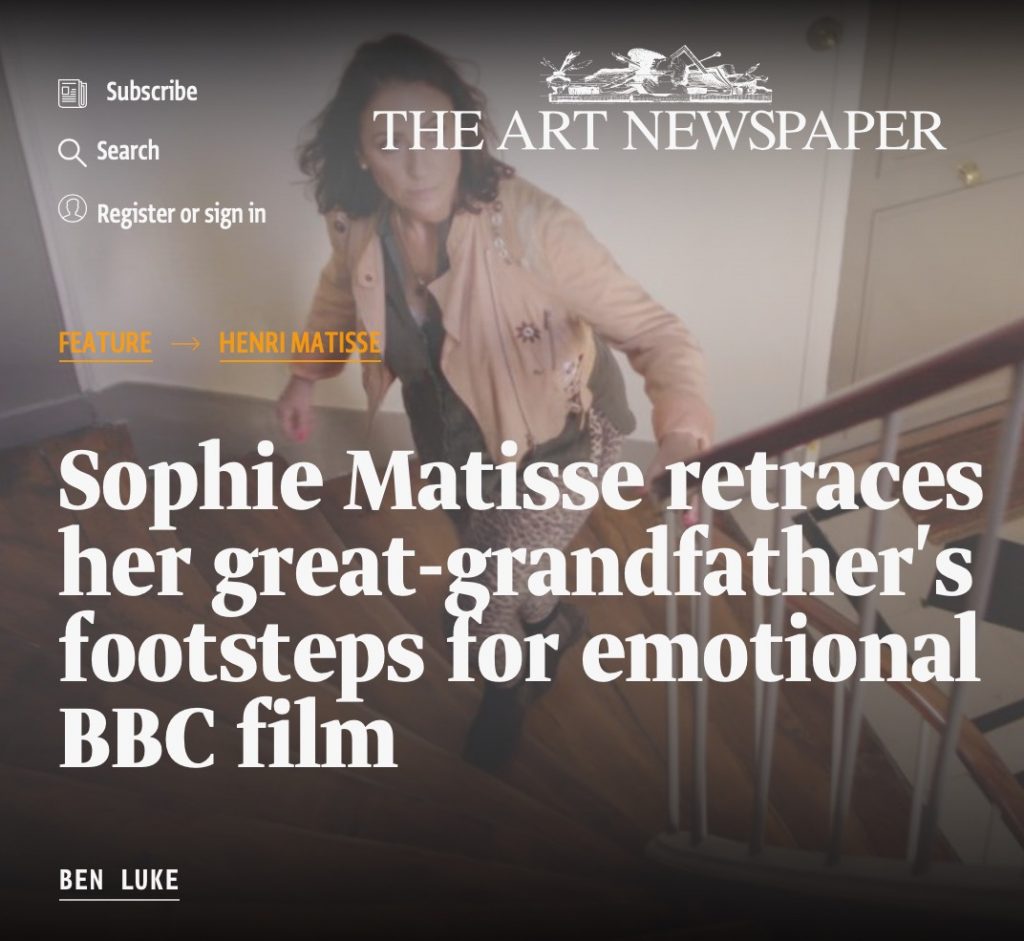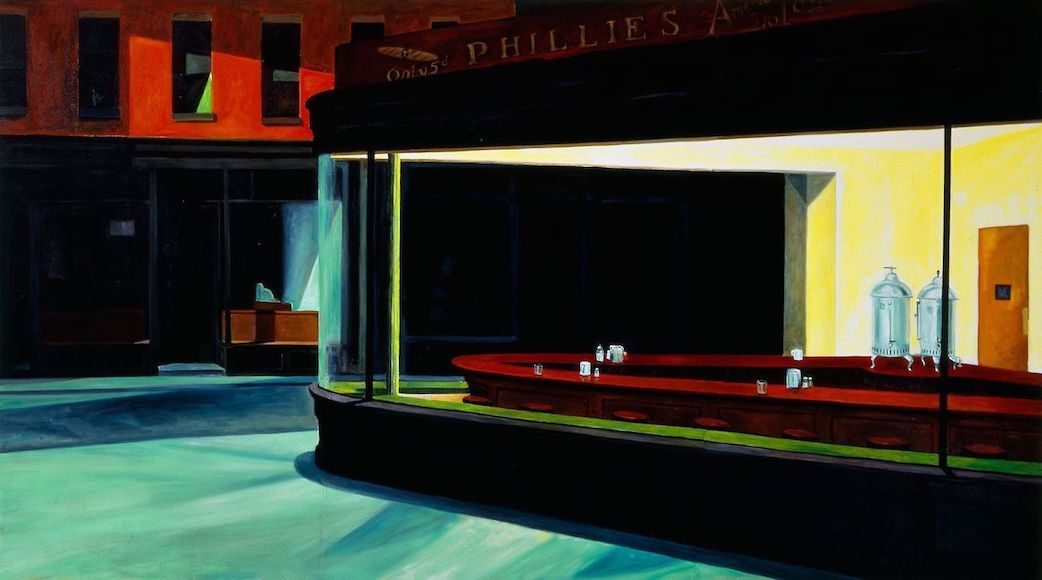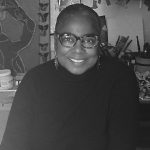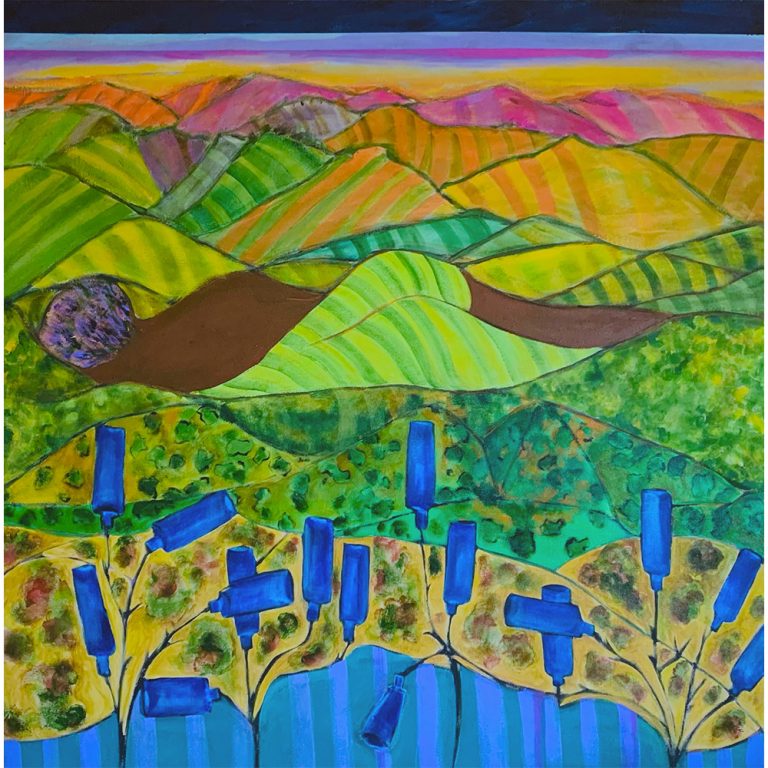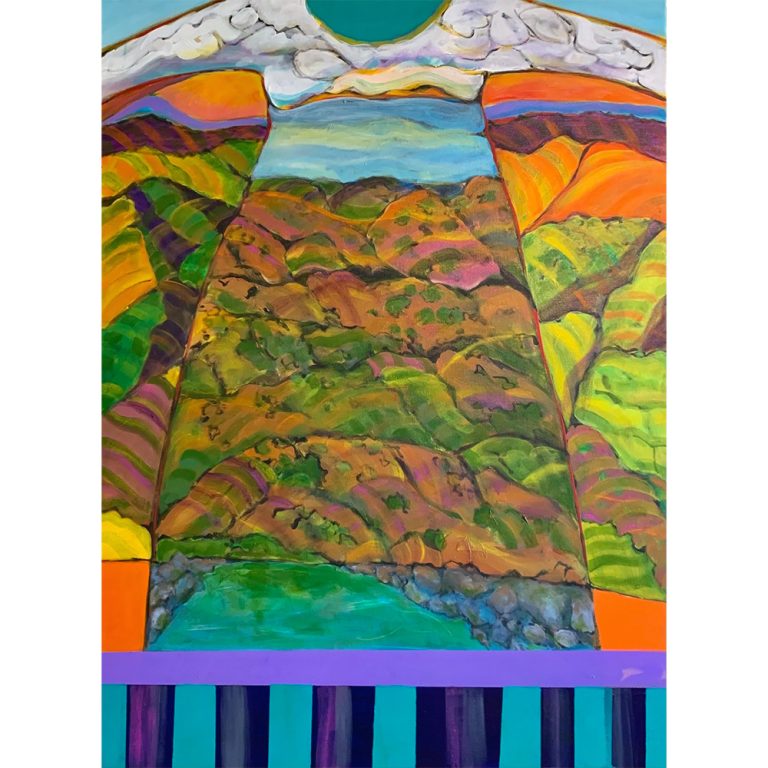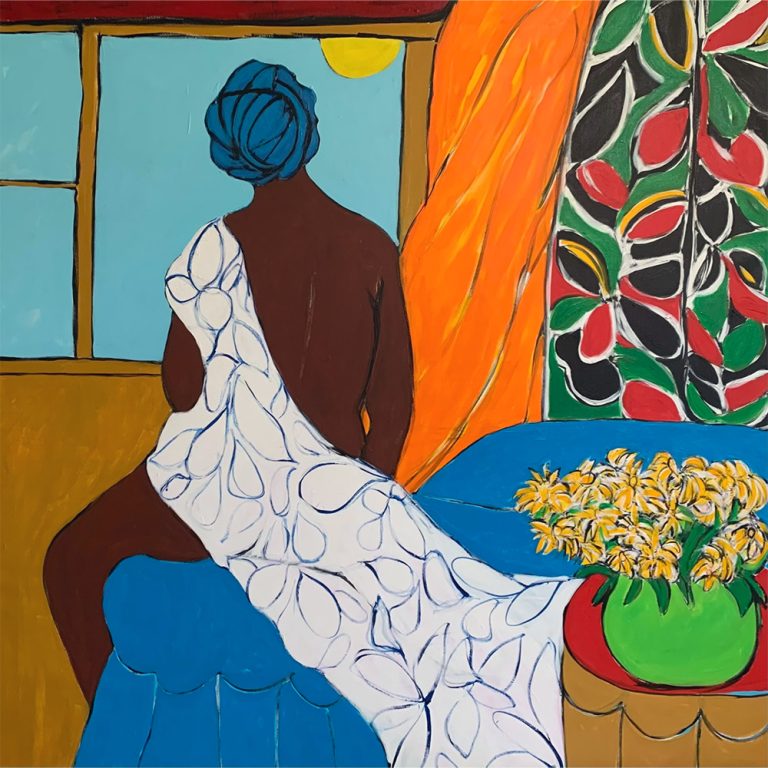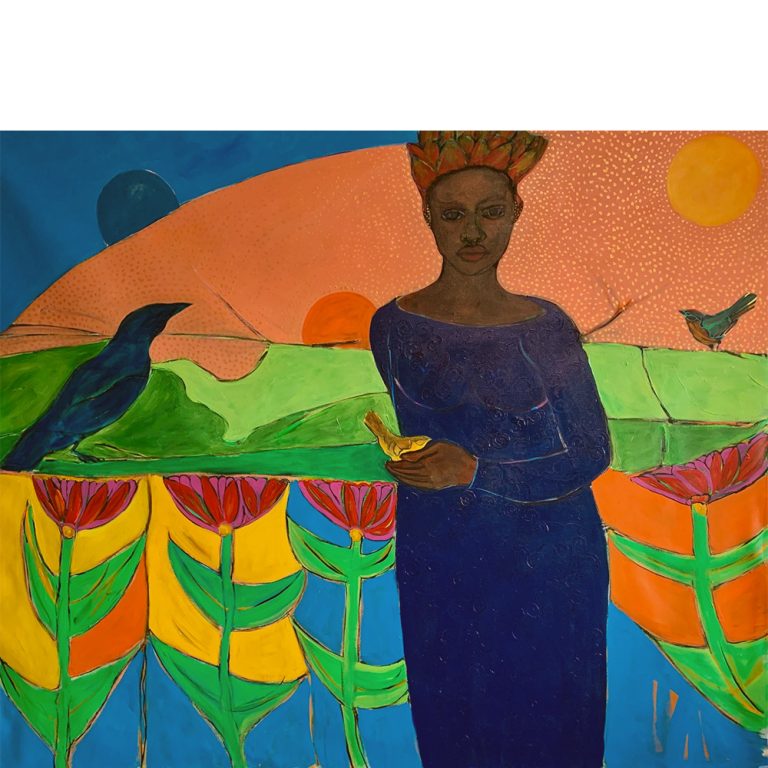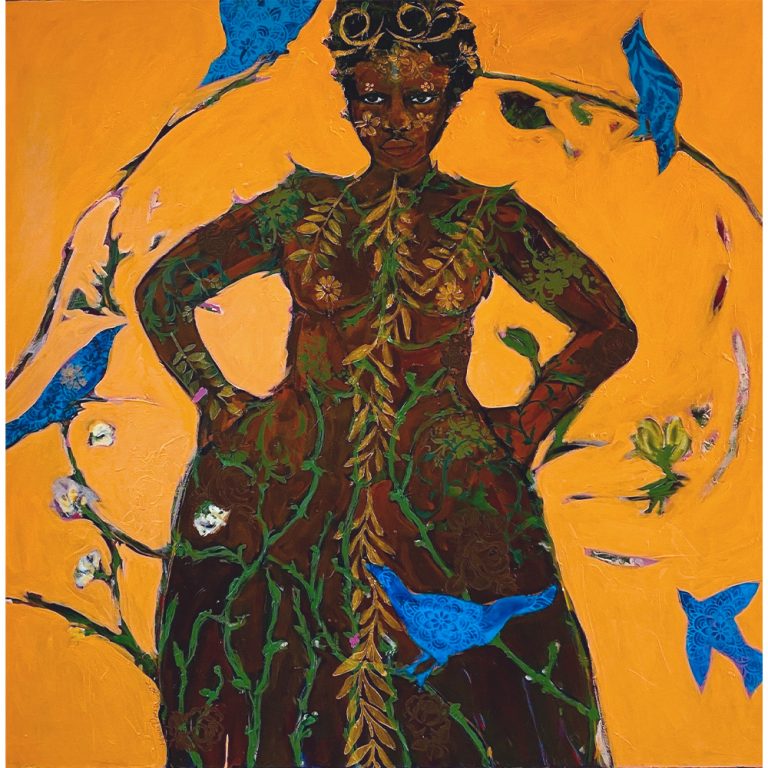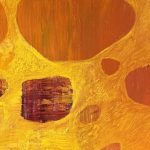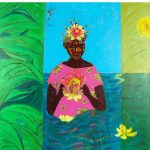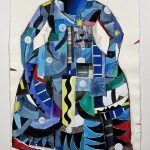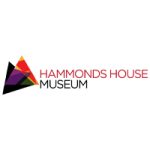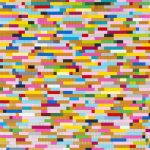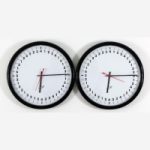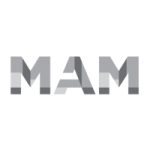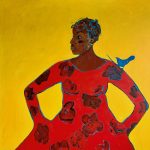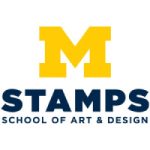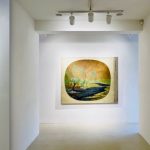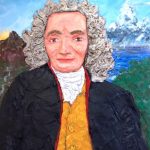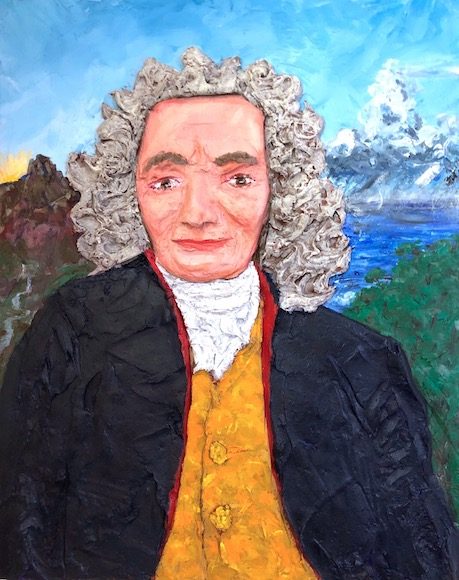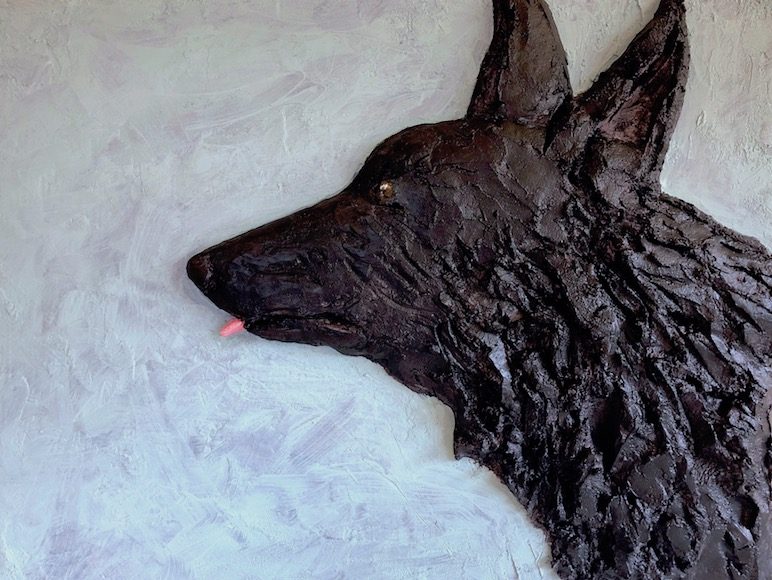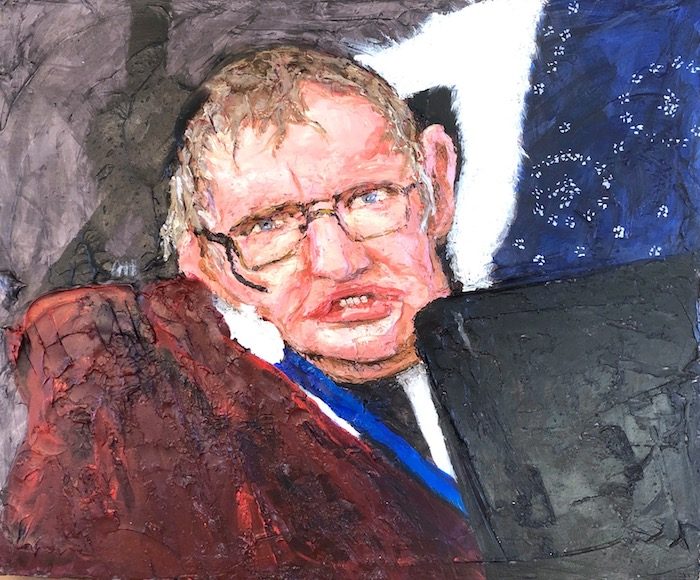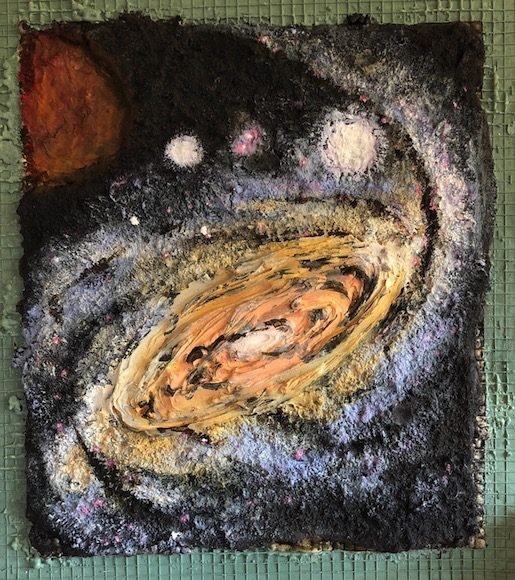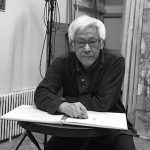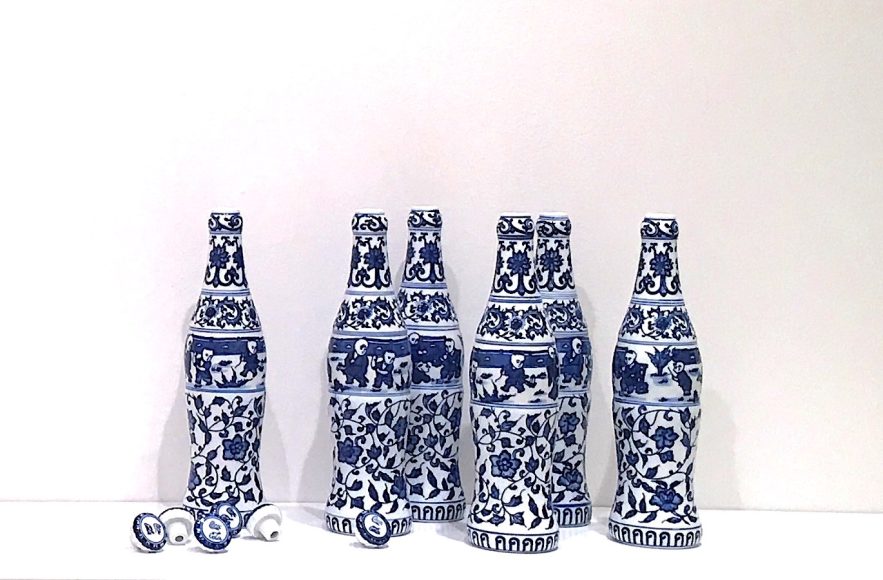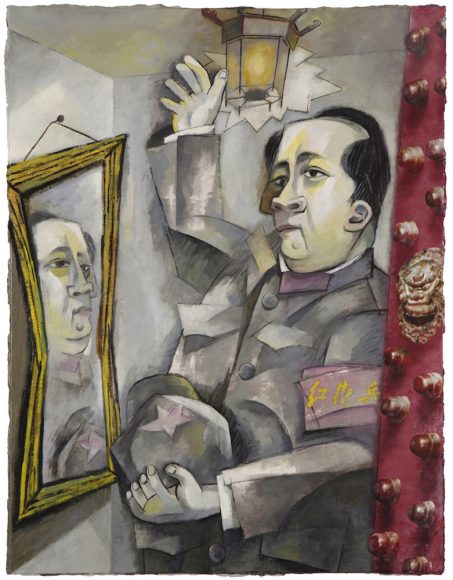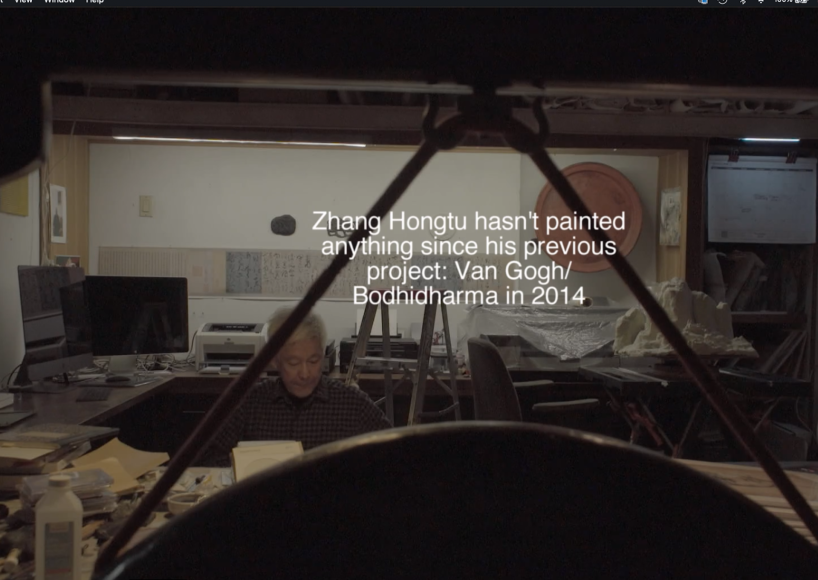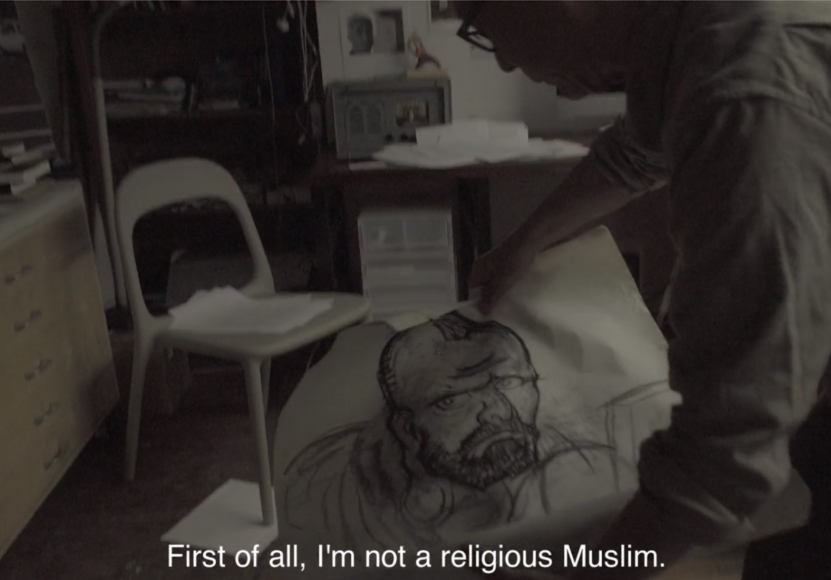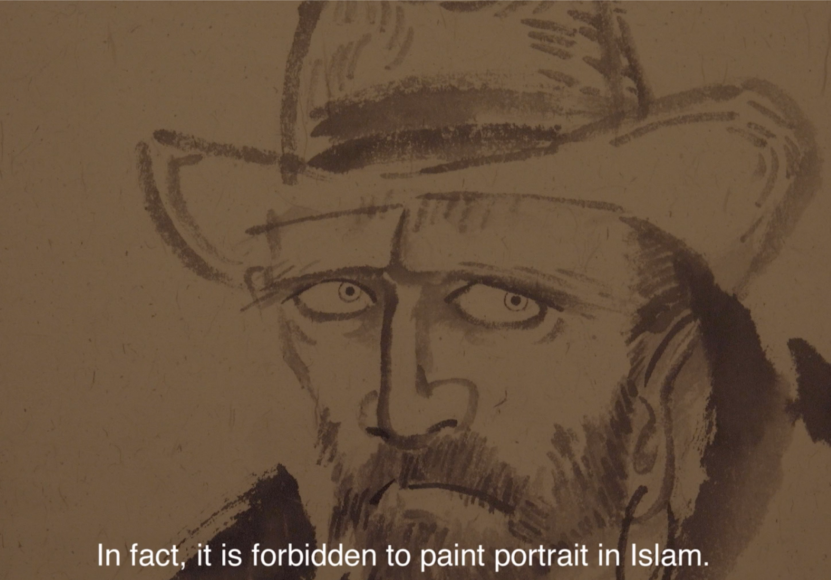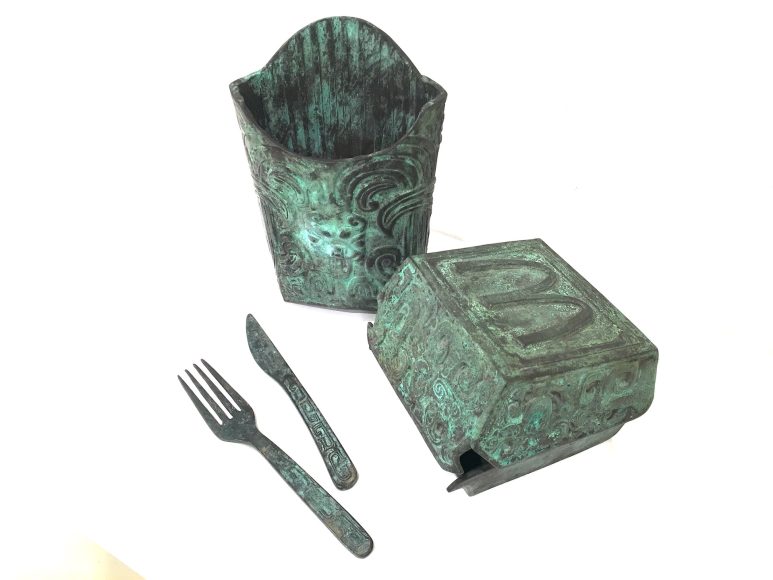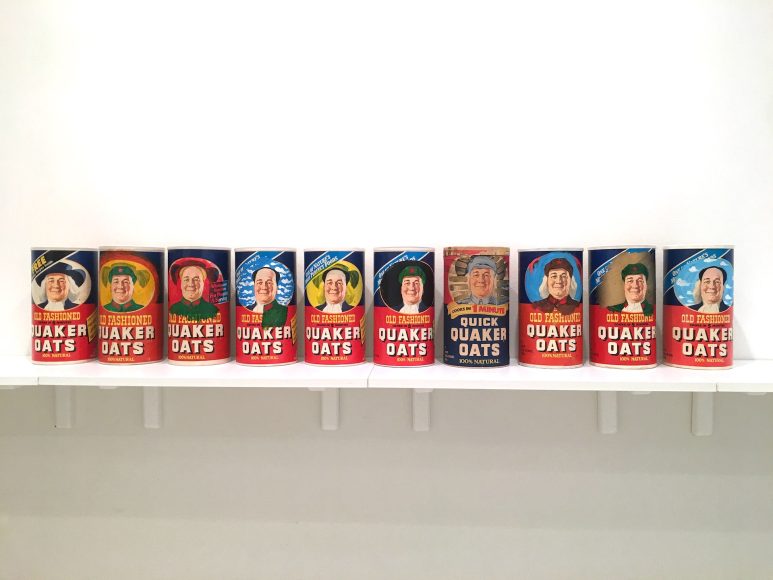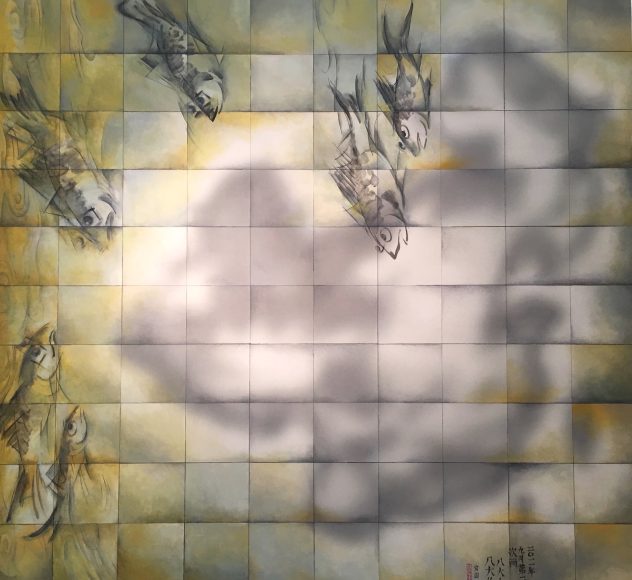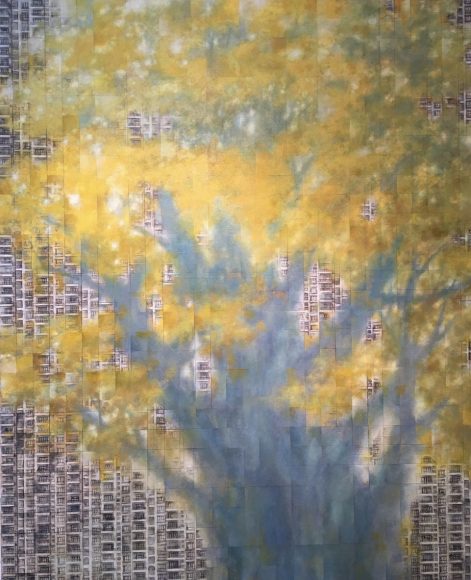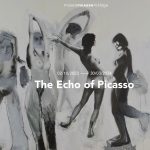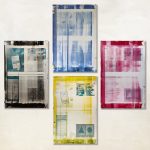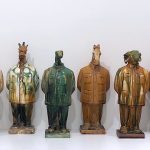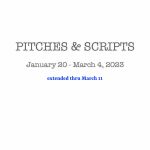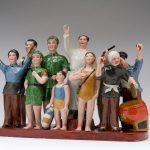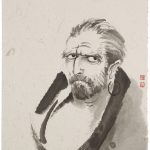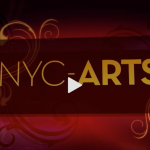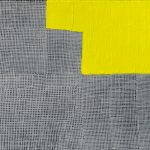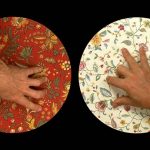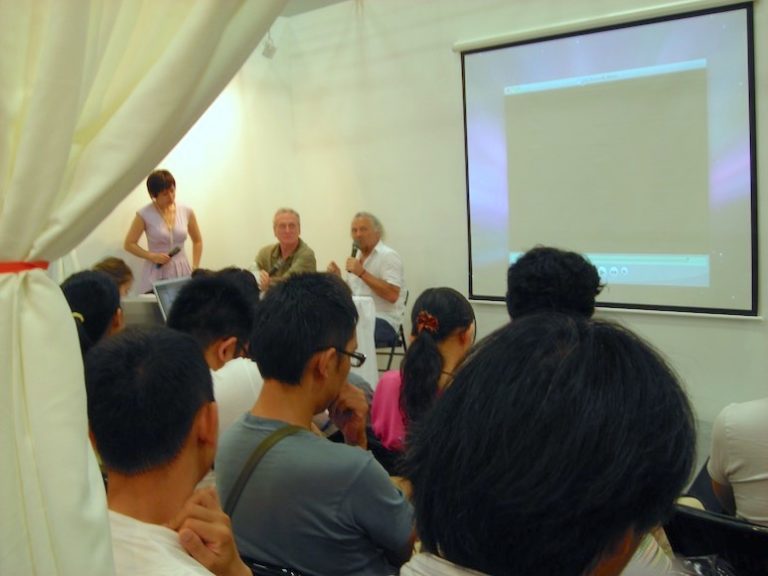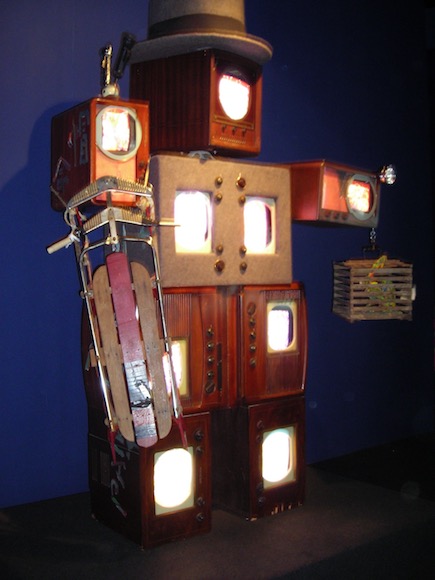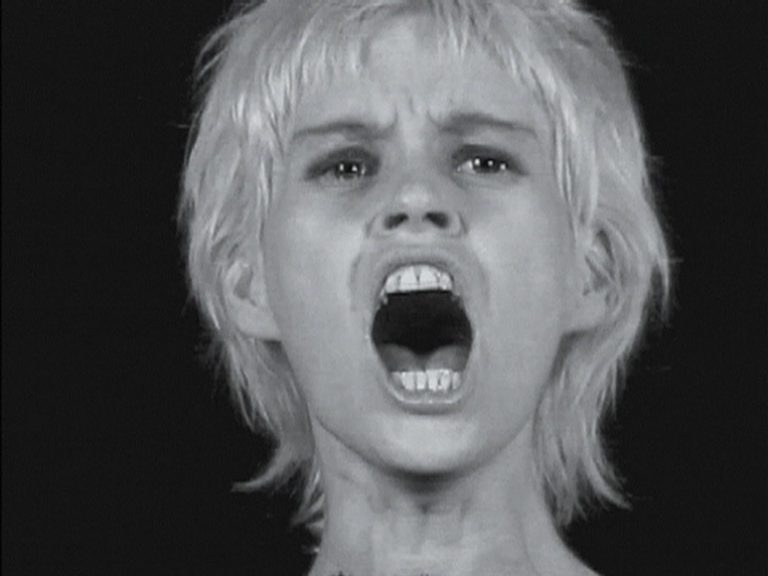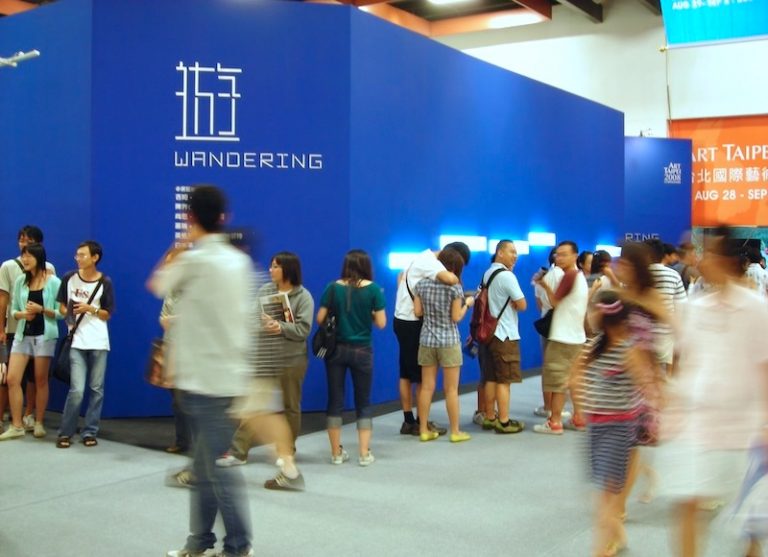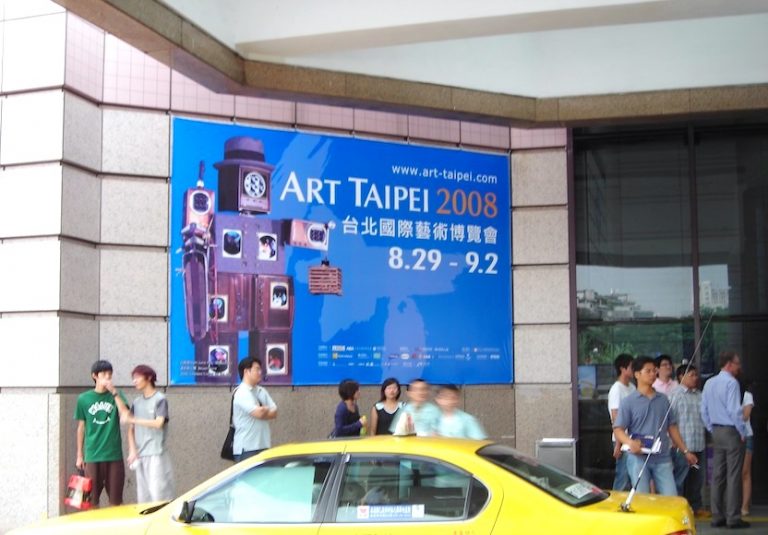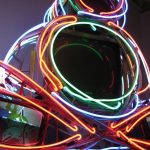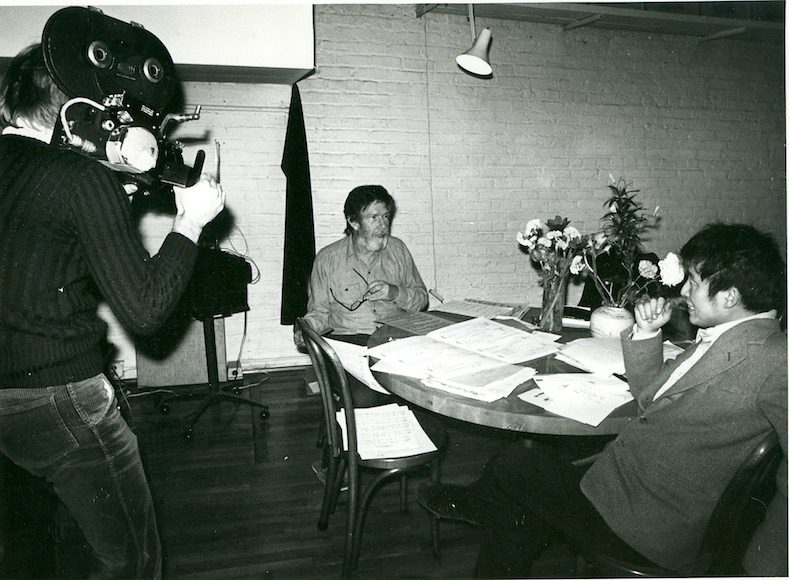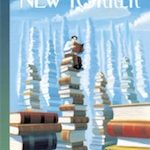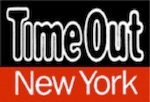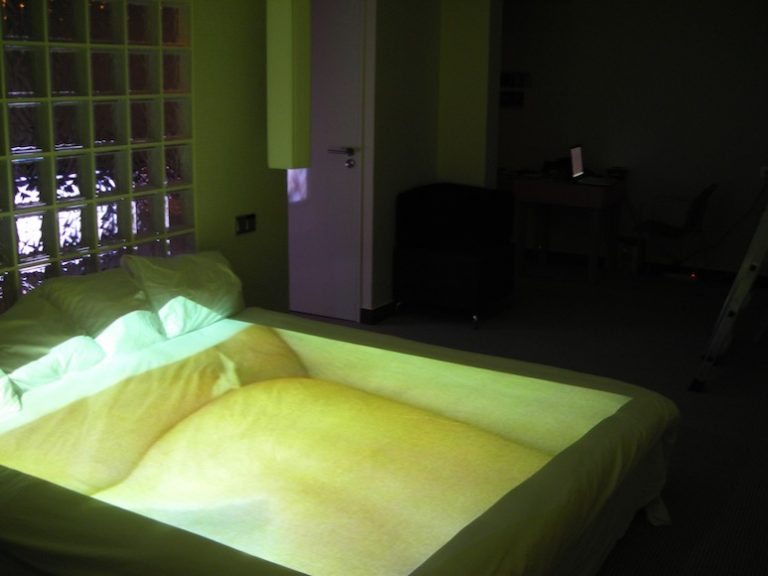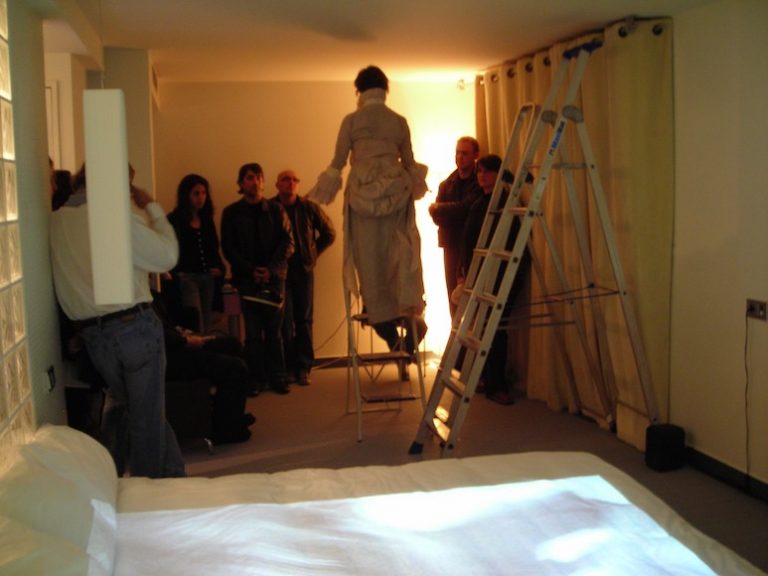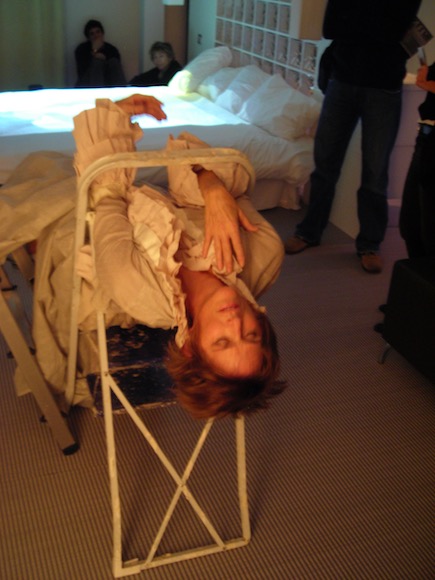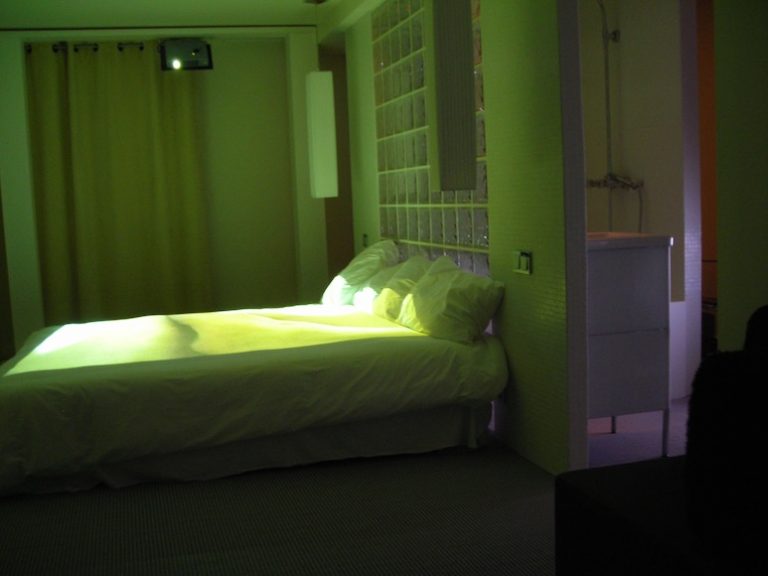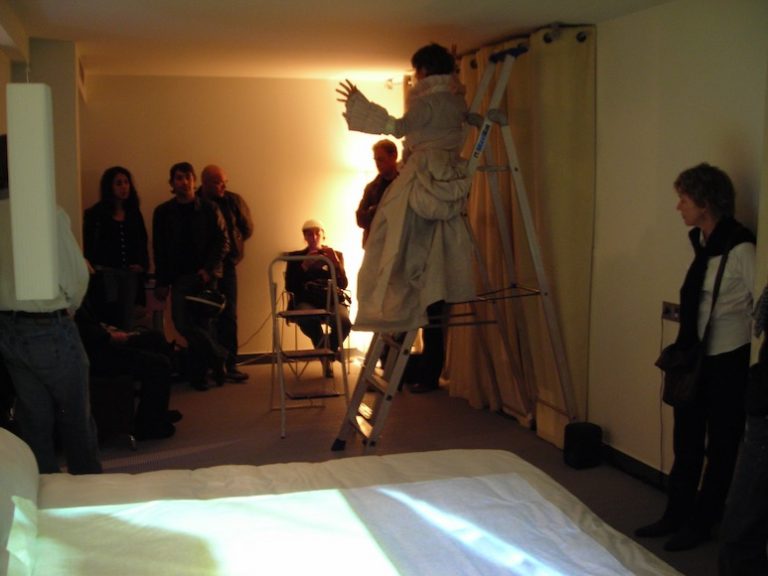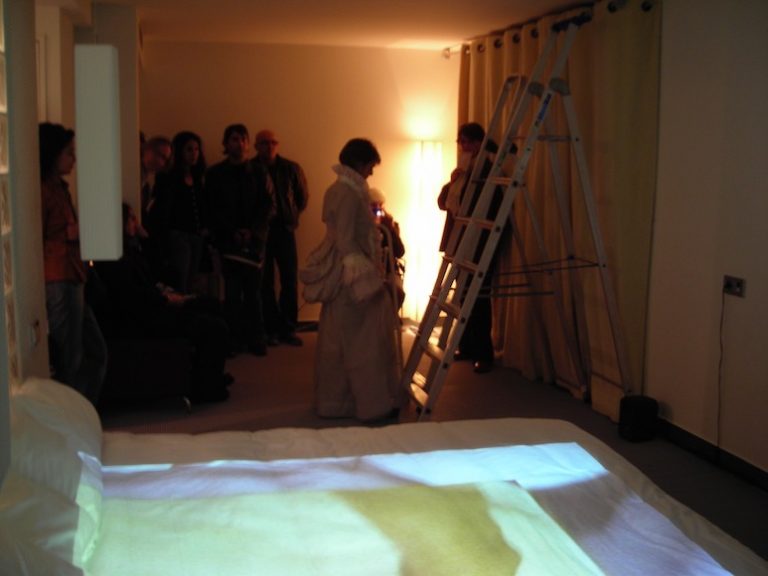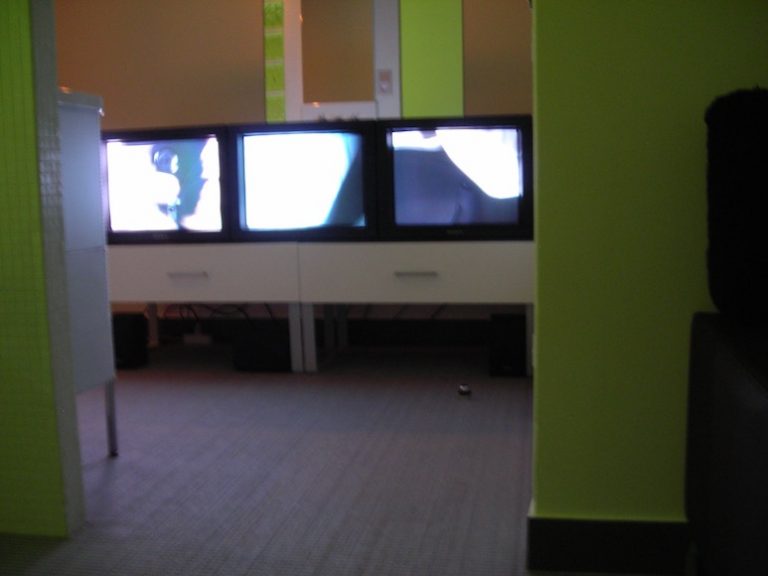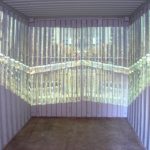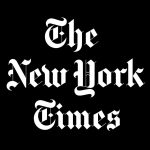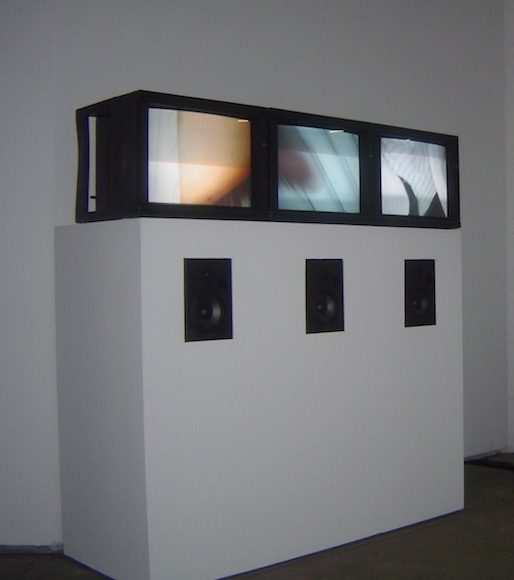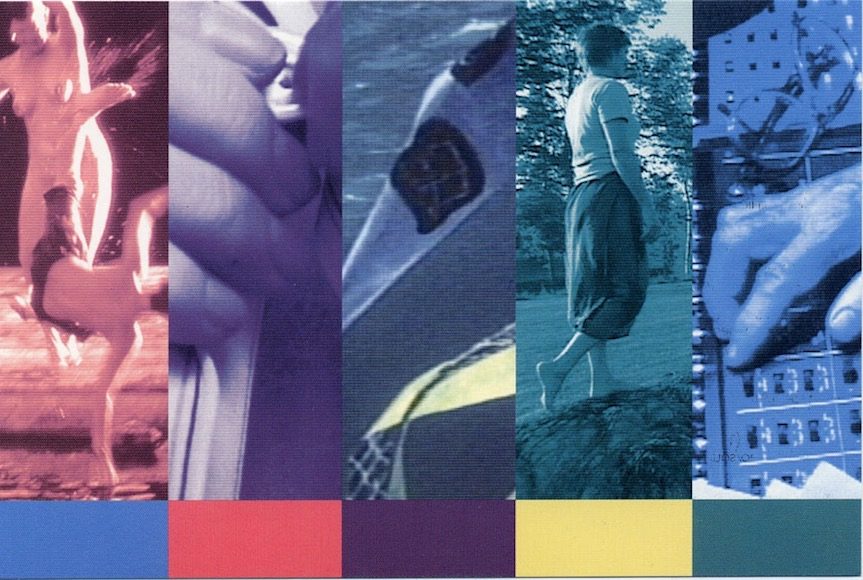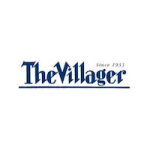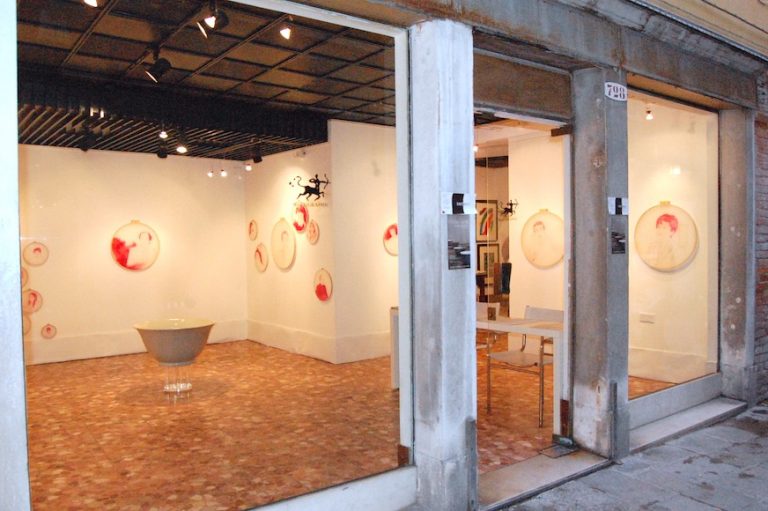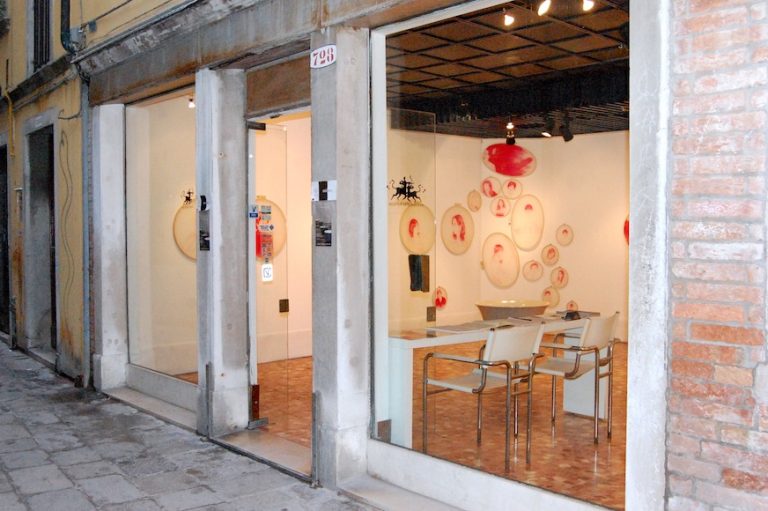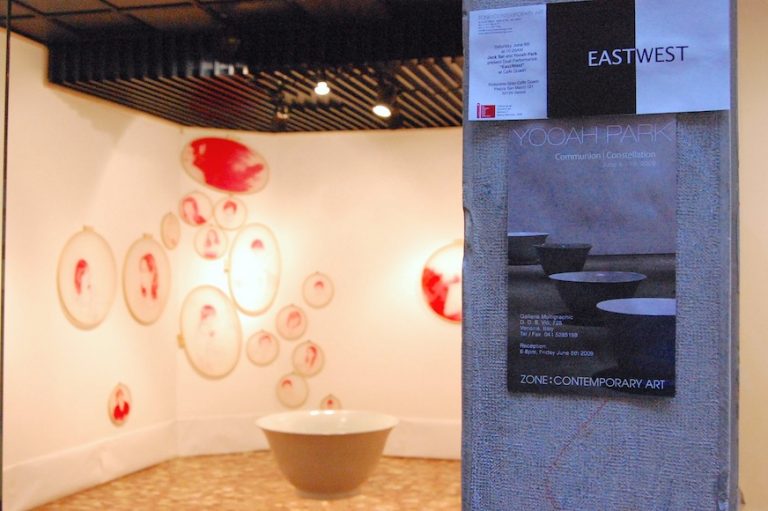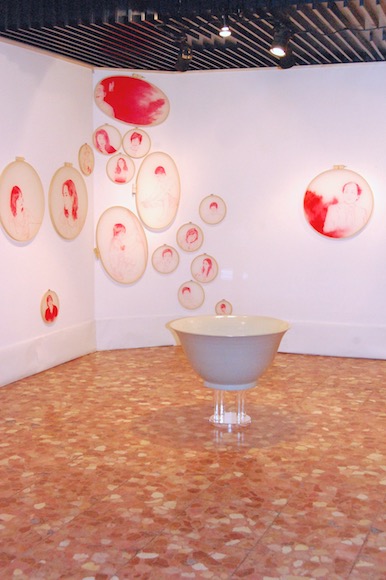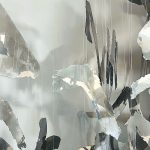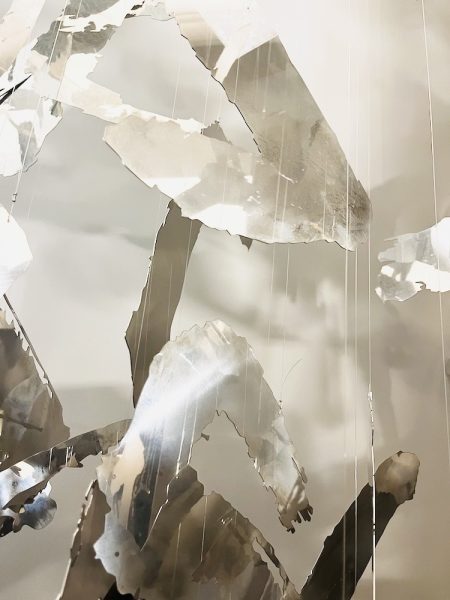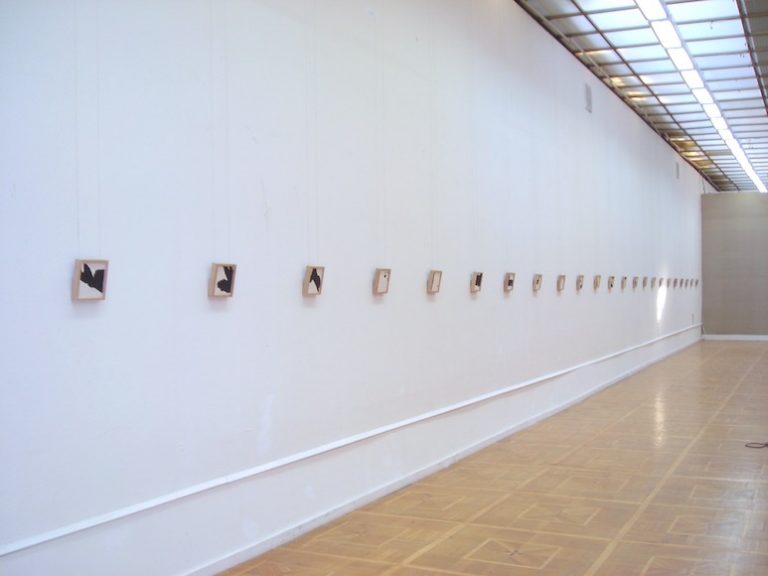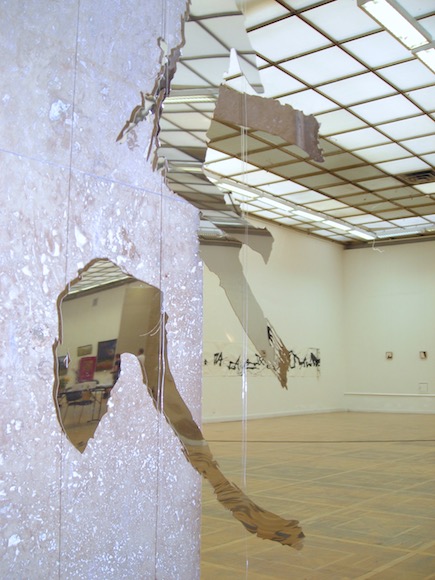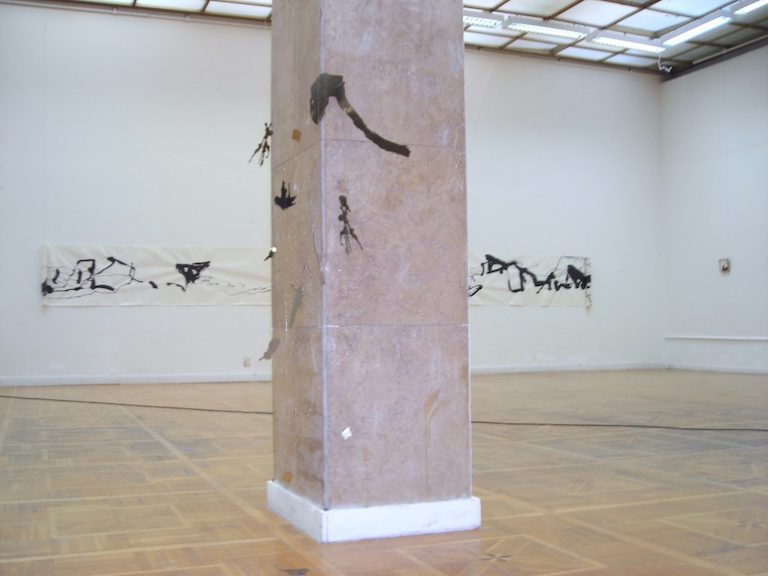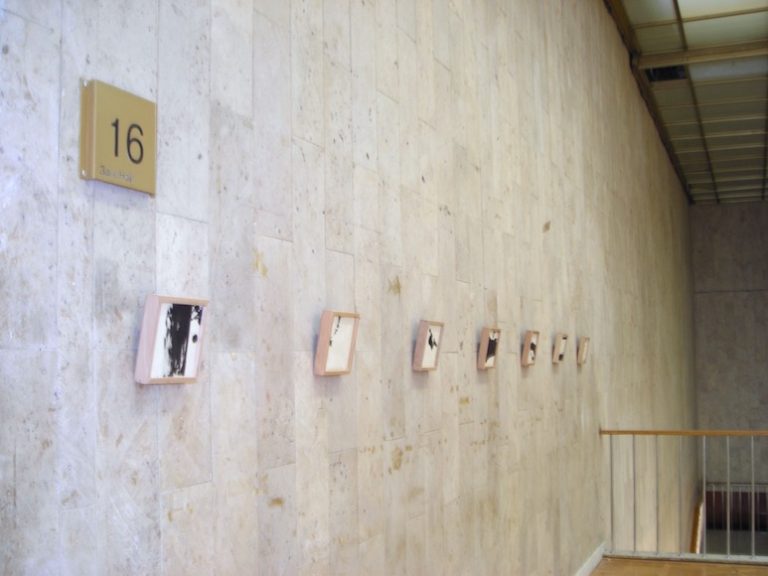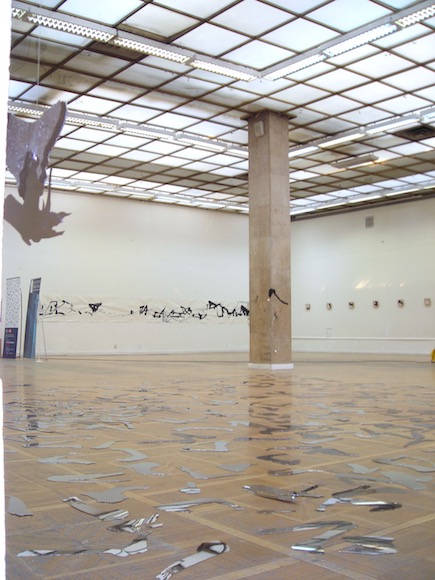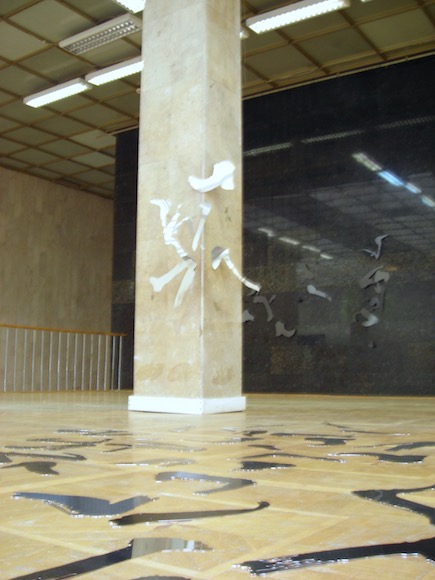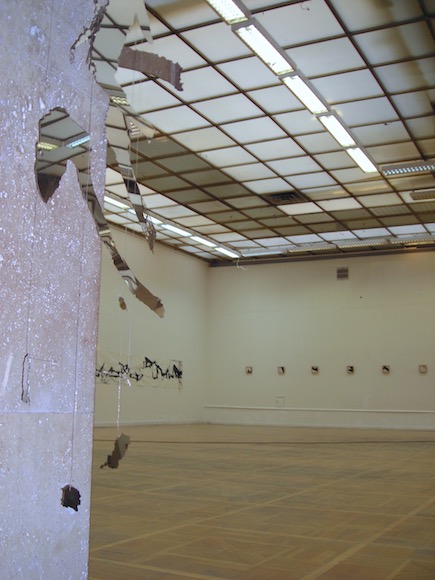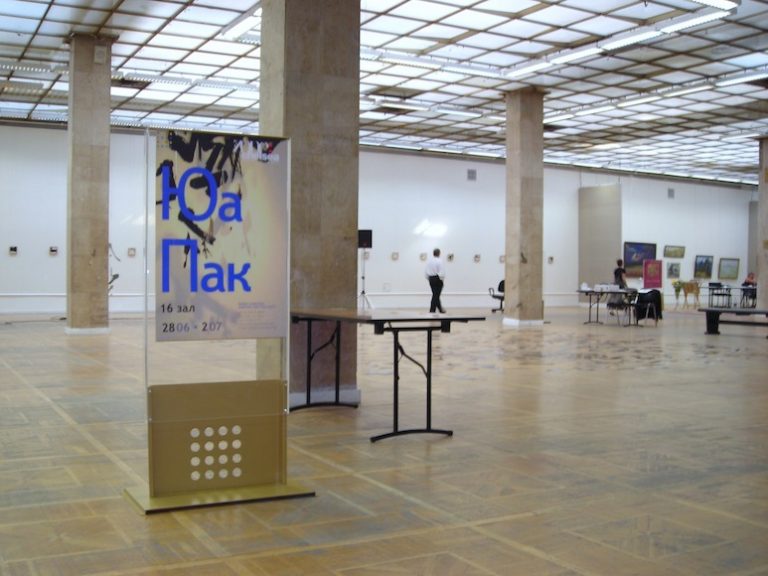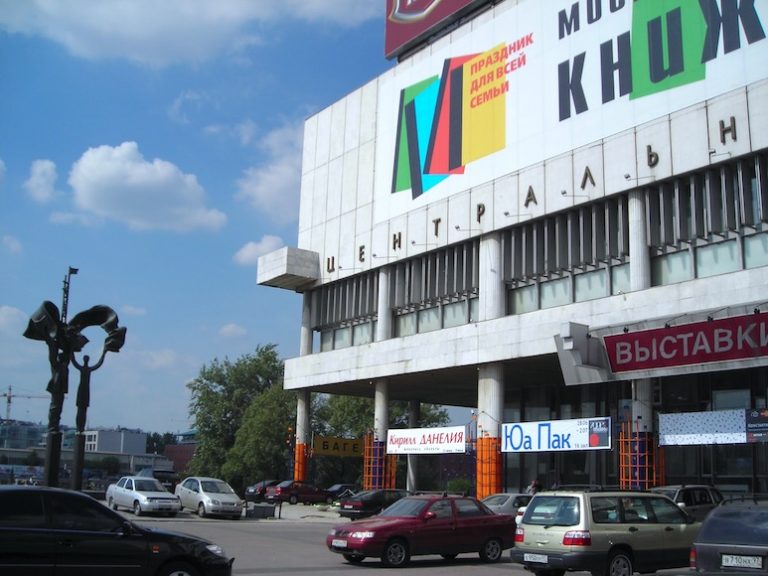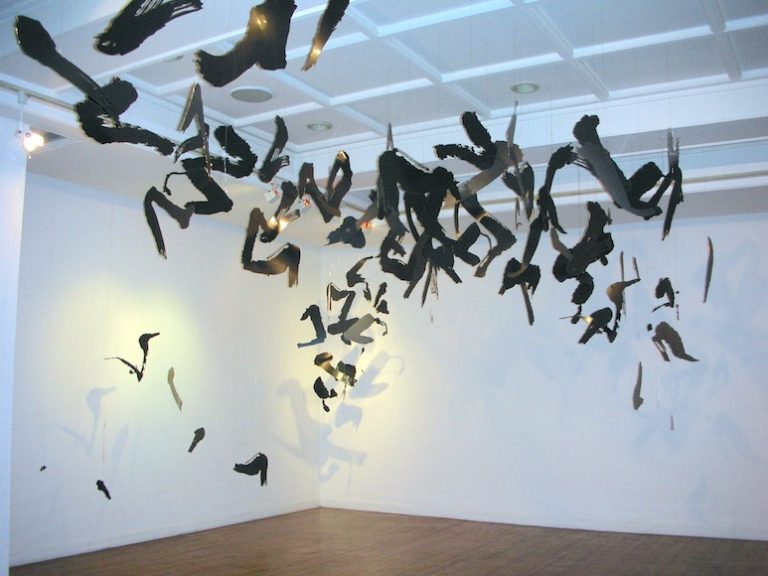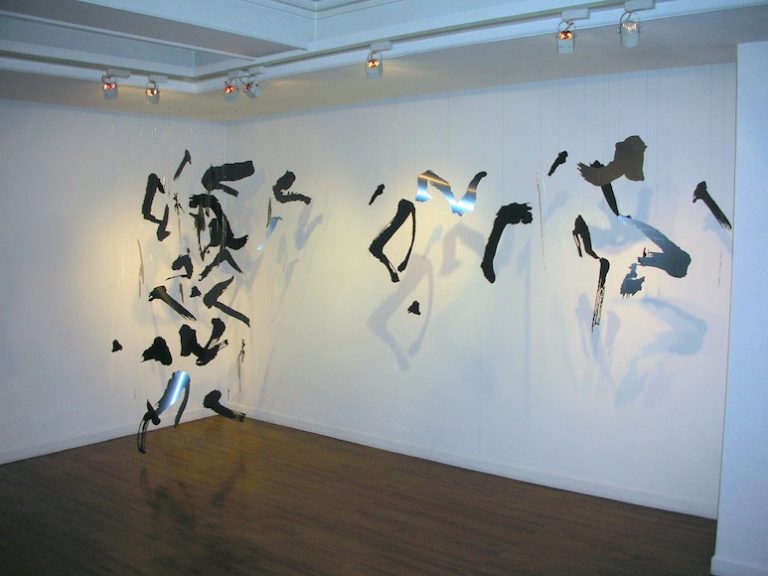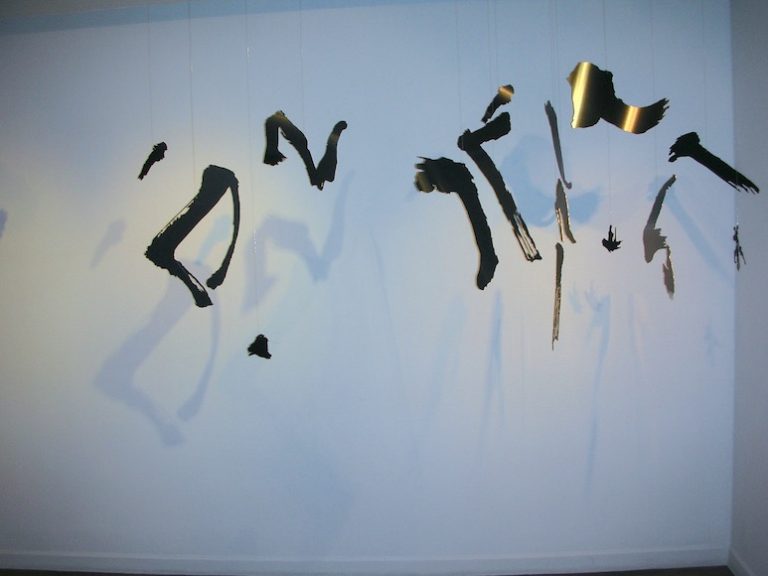Books
Lee and Silbergeld, ZHANG HONGTU, Expanding Visions of Shrinking World
DUKE University Press and Queens Museum
Kaohsiung Museum of Fine Arts. On the Road: Zhang Hongtu’s Artistic Journey. Kaohsiung: Kaohsiung Museum of Fine Arts, 2013.
The Ten Ox-Herding Pictures: Chan Master Kuo-an Shih-yuan, Song Dynasty, Reproduced by Zhang Hongtu. Taipei: TKG Foundation for Arts & Culture, 2014.
Zhang, Hongtu, and Jerome Silbergeld. Zhang Hongtu: An On-going Painting Project. New York: On-going Publications, 2000.
Zhang Hongtu: The Art Of Straddling Boundaries. Taipei: Lin & Keng Gallery, Inc., 2007.
Chapters or Sections of Books
Andrews, Julia F., and Kuiyi Shen. “No U-turn: Chinese Art after 1989.” In The Art Of Modern China, 257–77. Los Angeles: The Regent of the University of California, 2012.
Barmé, Geremie R. Shades of Mao: The Posthumous Cult of the Great Leader, 46, 215. New York: M. E. Sharpe, Inc., 1996.
Barmé, Geremie R., and Linda Jaivin. Introduction to New Ghosts, Old Dreams: Chinese Rebel Voices, xxvi. New York: Times Books, 1992.
Callahan, William A. “Gender, Democracy and Representation: Asian Revolutionary Images.” In Gendering the International, edited by Louiza Odysseos and Hakan Seckinelgin, 167–68. New York: Millennium, 2002.
Clarke, David. “Reframing Mao: Aspects of Recent Chinese Art, Popular Culture and Politics.” In Art & Place: Essays on Art from a Hong Kong Perspective, 236–49. Hong Kong: Hong Kong University Press, 1996.
Chang, Alexandra. “Once More: Is There An Asian American Aesthetic?” In Envisioning Diaspora: Asian American Visual Arts Collectives, 98–109. Beijing: Timezone 8 Limited, 2009.
Chang, Arnold. “From Fengshui to Fractals: A User’s Guide to Chinese Landscape Painting.” In ARTiculations: Undefining Chinese Contemporary Art, 33–61. New Jersey: Princeton University Press, 2010.
Chiu, Melissa. “An Expanded Chinese Art History: Internationalization of the Chinese Art World.” In Asian Art History: In the Twenty-First Century, edited by Vishakha N. Desai, 224. Williamstown: Sterling and Francine Clark Art Institute, 2007.
———. “Theories of Being Outside.” In Breakout: Chinese Art Outside China, 8, 18, 39–72, 113, 212. Milan: Charta, 2006.
Clarke, David. “Revolutions in Vision: Chinese Art and the Experience of Modernity.” In The Cambridge Companion to Modern Chinese Culture, 292–94. Cambridge: Cambridge University Press, 2008.
Cohen, Joan Lebold. “Groups: Contemporaries.” In The New Chinese Painting: 1949–1986, 77. New York: Harry N. Abrams, 1987.
Delue, Rachael Z. “Neither Here Nor There: China, Global Culture, and the End of American Art.” In ARTiculations: Undefining Chinese Contemporary Art, 257. New Jersey: Princeton University Press, 2010.
Dutton, Michael. Streetlife China, 162–63, 172, 174, 241, 262–65. Cambridge: Cambridge University Press, 1998.
Hallmark, Kara Kelly. “Zhang Hongtu.” In Encyclopedia of Asian American Artists: Artists of the American Mosaic, 261–65. Westport: Greenwood Press, 2007.
Hay, Jonathan. “Zhang Hongtu / Hongtu Zhang: An Interview.” In Boundaries in China, 280–98. London: Reaktion Books, 1994.
He, Xin. “Wheels: What’s New?” In New Ghosts, Old Dreams: Chinese Rebel Voices, 409. New York: Times Books, 1992.
Huot, Claire. “China’s Avant-Garde Art: Differences in the Family.” In China’s New Cultural Scene: A Handbook of Changes, 126–41. Durham: Duke University Press, 2000.
Kwon, Sowon. “Potatoes, Teddy Bears, Lipsticks, and Mao.” In Art in General Manual 1993–1994. New York: Art In General, Inc., 1994.
Lao, She. “Wheels: A Big Confucius and Little Emiles.” In New Ghosts, Old Dreams: Chinese Rebel Voices, 404. New York: Times Books, 1992.
Lim, Michelle. “Cultural Iconography as Style.” In Outside In: Chinese x American x Contemporary Art, 270–81. New Jersey: Princeton University Art Museum, 2009.
Lin, Xiaoping. “Globalism or Nationalism?” In Children of Marx and Coca-Cola: Chinese Avant-Garde Art and Independent Cinema, 72. Honolulu: University of Hawaii Press, 2009.
———. “Globalism or Nationalism?” In Global Visual Cultures: An Anthology, 9–26. West Sussex: Wiley-Blackwell, 2011.
Liu, Changhan. The Chinese Overseas Art Icons of The 100 Years, 150–51. Taipei: Artist Publication, 2000.
Liu, Xiaobo. “Wheels: On Solitude.” In New Ghosts, Old Dreams: Chinese Rebel Voices, 384. New York: Times Books, 1992.
McCausland, Shane. Introduction and Epilogue in Zhao Mengfu: Calligraphy and Painting for Khubilai’s China, 3, 333–37. Hong Kong: Hong Kong University Press, 2011.
Mittler, Barbara. “Mao Wherever You Go: The Art of Repetition in Revolutionary China.” In A Continuous Revolution: Making Sense of Cultural Revolution Culture, 298, 299, 300–1, 311, 326–27, 306, 315. London: Harvard University Asia Center, 2012.
Ngai, Jimmy S. Y., “The Cry: Tiananmen Days.” In New Ghosts, Old Dreams: Chinese Rebel Voices, 76, 93. New York: Times Books, 1992.
Purtle, Jennifer. “Whose Hobbyhorse?: Loading the Deck.” In Chinese Landscape Painting as Western Art History, 5–8. Hong Kong: Hong Kong University Press, 2010.
Schell, Orville. Mandate of Heaven: A New Generation of Entrepreneurs, Dissidents, Bohemians, and Technocrats Lays Claim to China’s Future, 290–91. New York: Simon & Schuster, 1994.
Silbergeld, Jerome. “An Outsider’s Outsider Comes In.” In Outside In: Chinese x American x Contemporary Art, 257–69. New Jersey: Princeton University Art Museum, 2009.
———. “Facades: The New Beijing and Unsettled Ecology of Jia Zhangke’s The World.” In Chinese Ecocinema: In the Age of Environmental Challenge, edited by Sheldon H. Lu and Jiayan Mi, 122. Hong Kong: Hong Kong University Press, 2009.
———. “The Space Between: Cross-Cultural Encounters in Contemporary Chinese Art.” In Xu Bing and Contemporary Chinese Art: Cultural and Philosophical, edited by Hsingyuan Tsao and Roger T. Ames, 177–98. New York: State University of New York Press, 2011.
Sullivan, Michael. Art and Artists of Twentieth Century China, 232, 271. Berkeley and Los Angeles: University of California Press, 1996.
Tam, Vivienne. “MAO ART: Interview with Zhang Hongtu.” In China Chic, 92–4. New York: HarperCollins, 1999.
Tu, Thuy Linh Nguyen. “Material Mao: Fashion Histories Out of Icons.” In The Beautiful Generation: Asian Americans and the Cultural Economy of Fashion, 145–48, 156–64. Durham: Duke University Press, 2011.
Valjakka, Minna. “Parodying Mao: Earliest Existing Caricatures of Mao.” In Many Faces of Mao Zedong, 170. Helsinki: University of Helsinki, 2011.
Vine, Richard. “The Scene Now: Chapter 6.” In New China New Art, 198, 199, 206. New York: Prestel, 2008.
Yang, Alice. “Review: A Group Show: We Are the Universe.” In Why Asia?: Contemporary Asian and Asian American Art, 62. New York: New York University Press, 1998.
Zhang, Hongtu. “Blurring the Boundary Between Yesterday and Today, for Tomorrow.” In ARTiculations: Undefining Chinese Contemporary Art, edited by Jerome Silbergeld and Dora C. Y. Ching, 212–31. New Jersey: Princeton University Press, 2010.
———. “Live to Tell: I Don’t Want to Do Anything Pure.” In Transculturalism: How the World Is Coming Together, edited by Claude Grunitzky with Trace Magazine Contributors, 236–37. New York: True Agency, 2004.
Journal Articles
ART/LIFE Doubletree by Hilton Hotel Boston-Downtown 241. Ventura: ARTLIFE, 2002.
“The Black Hole Art of Zhang Hongtu.” Postcolonial Studies 2, no. 2 (1999): 121, 165–69.
Bordeleau, Erik. “Le Political Pop: Un Art Profanatoire?” Etc.: Revue de l’Art Actuel 91 (2010–11): 21–25.
Boucher, Madeleine. “Beyond Pop: Imagery and Appropriation in Contemporary Chinese Art.” Columbia East Asia Review vol. 2 (2009): 37–55.
Callahan, William A. “Vision of Gender and Democracy: Revolutionary Photo Albums in Asia.” Journal of International Studies, vol. 27, no. 4 (1998): 1031–60.
Cline, Rob. “Mao Isn’t Just for Breakfast Anymore.” Icon (June 8, 2000).
Cohn, Don J. “Cultural Imports: Sotheby’s Brings Chinese Contemporary Art to New York.” Art Asia Pacific 48 (2006): 56–7.
Cornand, Brigitte. “Around the World.” Art Press International Edition 185 (1993): 69.
Dudek, Ingrid. “Mao in Contemporary Chinese Art.” Andy Warhol’s Mao, auction catalog (New York: Christie’s, 2006).
Erickson, Britta. “The Contemporary Artistic Deconstruction—and Reconstruction—of Brush and Ink Painting.” Yishu: Journal of Contemporary Chinese Art vol. 2, no. 2 (2003): 82–9.
“Face of Protest.” US News & World Report (September 18, 1989): 13.
Fang, Lizhi, and Richard Dicker. “Portraits of Oppression: A Leading Dissident Decries the Continued Atrocities in China.” The Sciences vol. 32, issue 5 (1992): 16–21.
Goodman, Jonathan. “Exhibition Review: Zhang Hongtu at the Bronx Museum of the Arts.” Asia-Pacific Sculpture News vol. 2, no. 2 (1996): 57–8.
———. “How Chinese Is It?” Architrave: A Journal of the Arts (1997): 43–6.
———. “Shuffling the Deck.” Art AsiaPacific 38 (2003): 84–5.
———. “Zhang Hongtu.”Art AsiaPacific 15 (1997): 91.
Hay, Jonathan. “Ambivalent Icons.” Orientations (July 1992).
Hollow, Michele C. “Access to Art.” Summit Magazine Holiday Issue (2006): 44–9.
Hunter, Felicia. “Exhibit Features Works of Chinese Artist Who Mixed Western and Eastern Styles and Symbols.” Yale Bulletin and Calendar vol. 28, no. 7 (1999).
Jacoby, Russell. “Whither Marxism?” Transition: An International Review 69 (1996): 100–15.
Kaylan, Melik. “Dealer’s Choice.” House and Garden (April 1999): 92.
Kelley, Robin D. G., and Betsy Esch. “Black Like Mao: Red China and Black Revolution.” Souls: A Critical Journal of Black Politics, Culture, and Society vol. 1, no. 4 (1999): 8–11.
Kumagai, Isako. “Chinese Artists in New York.” Bulletin of Museum of Contemporary Art, Tokyo 9 (2003): 15–16.
———. “Zhang Hongtu and Ji Yunfei, Chinese Artists in New York City.” Saitama University Review vol. 46 (2010): 79–88.
Lago, Francesca Dal. “Personal Mao: Reshaping an Icon in Contemporary Chinese Art.” Art Journal vol. 58, no. 2 (1999): 54.
Lee, Robert. “Editorial.” Artspiral vol. 6 (1992): 3.
Levin, Gail. “Changing Cultures: The Recent Immigration of Chinese Artists to the U.S.” Asian Art News vol. 4, no. 5 (1994): 70–73.
———. “Immigrant Artists from China at Baruch College Gallery.” Art Times (May 1991): 10–11.
Lin, Edward. “Censored!” Transpacific (June 1994): 58–61.
Marcus, David. “The Museum Takes on the Museum: Art Exhibition Offers New Perspectives on Familiar Works.” Princeton Alumni Weekly (March 26, 2003).
Newman, Cathy. “Culture: Mao Now.” National Geographic vol. 213, no. 5 (2008): 100–1.
Ng, Elaine W. “Artists on Spirituality.” Art Asia Pacific 51 (2007): 91.
Pappas, Ben. “Boppa um Mao Mao.” Forbes (January 26, 1998).
Pollack, Barbara. “China’s Desert Treasure.” Art News vol. 112, no. 11 (2013): 74–81.
Schell, Orville. “Once Again, Long Live Chairman Mao.” Atlantic (December 1992).
Shen, Kuiyi. “Landscape as Cultural Consciousness in Contemporary Chinese Art.” Yishu: Journal of Contemporary Chinese Art vol. 2, no. 4 (2003): 33–40.
“Shuffling the Deck: The Collection Reconsidered.” Asian Art: The Newspaper for Collectors, Dealers, Museums and Galleries (March 2003).
Snow, Crocker. “Graphic Expressions of Protest.” The World Paper (October 1989).
Takahashi, Corey. “Art Imitates Queens Life—Museum Exhibit Mixes Global Spirit and Local Diversity.” Newsday (September 20, 2002).
Tallmer, Jerry. “Chinese Works Bound & Unbound for Glory.” New York Post (May 10, 1991).
Weyburn, Jennifer A. “Drawing on East and West.” The Yale-China Review Centennial Issue, vol. 7, no. 3 (2002): 10–15.
Wojciechowski, Leigh Ann. “Chinese Artists: Reinventing Tradition.” Pitt Magazine (Fall 2004): 3–4.
Wu, Hung. “Afterword: ‘Hong Kong 1997’—T-shirt Designs by Zhang Hongtu.” Public Culture vol. 9, no. 3 (1997): 417–25.
Yang, Alice. “Group Show at Haenah-Kent Gallery.” Asian Art News vol. 4, no. 2 (1994): 94–5.
Zhu, Lillian. “Zhang Hongtu.” Asian Voices: Destiny vol. 7 (1994): 26–30.
Newspaper Articles
Alonso, Nathalie. “Back to the Garden: Daily Life to Spiritual Vision.” Queens Chronicle, April 17, 2008.
“Artist Famed for Mao’s Image Visits Hong Kong.” Hong Kong Standard, April 24, 1996.
Bischoff, Dan. “Making It Big: Summit Gallery Spotlights Massive Culture-Blending Creations by the China-born.” The Star-Ledger, September 29, 2006.
“Bridging the Cultural Gap.” The Citizen, January 15, 2001.
Cheung, Denise. “Art Meets Science in Bold Exhibition.” South China Morning Post, May 9, 1996.
Cotter, Holland. “Art in Review.” New York Times, June 22, 2001.
Cullinan, Helen. “A Great Wall of Protest: ‘China 1989’ Exhibit Speaks Tellingly on Human Rights.” The Plain Dealer, August 27, 1992.
Dao, James. “From Shanghai to Soho: For Chinese Expatriates, It’s Art for Heart’s Sake.” Daily News, October 29, 1989.
———. “Lady in Square Reborn: Student Symbol to Stand in N.Y.” Daily News, June 8, 1989.
D’Arcy, David. “Artist’s Pointed Critique Is Barred from Beijing.” Wall Street Journal, August 21, 2008.
Dunning, Jennifer. “The Dance: ‘Silk Road,’ by Miss Yung.” New York Times, April 8, 1984.
Fisher, Harry. “East Meets West in Color.” The Morning Call, April 7, 2006.
Francia, Luis H. “Tiananmen Show Gutted.” Village Voice, July 31, 1990.
Genocchio, Benjamin. “Sampling the Diverse Output of Artists from China: An Exhibition in Summit Touches on Issues of Identity and Culture Shock.” New York Times, October 15, 2006.
Glueck, Grace. “Art in Review.” New York Times, April 29, 2005.
Harrison, Helen A. “A Painter’s Images of Mao as Reflected in a Changing China.” New York Times, November 10, 1996.
———. “ ‘This Is Long Island,’ Without Any Automobiles or People.” New York Times, April 16, 1995.
Hernandez, Barbara. “East Meets West in Baruch Art Gallery.” Ticker Perspectives, May 8, 1991.
Johnson, Ken. “A Pluralist Exhibition in the Plural Borough.” New York Times, August 23, 2002.
Johnson, Patricia C. “The Station Offers ‘Space’ for Humanistic Self-Expression.” Houston Chronicle, September 14, 2002.
Lee, Robert. “Zhang Hongtu.” Village Voice Art Issue, Spring 1989.
Lovelace, Carey. “Memories of Mao: An Emigré Focuses on the Chairman.” Newsday, November 8, 1996.
Mangaliman, Jessie. “Brushes Wielded Against Terror at Home.” New York Newsday, June 23, 1989.
Mimoni, Victor G. “Flushing Art Show Makes Smiles Bloom.” Queens Courier, March 13, 2008.
Morano, Marylou. “Chinese Artists Travel Between Cultures at VACNJ.” The Westfield Leader And The Scotch Plains—Fanwood TIMES, October 5, 2006.
“Newton Display Driven by Notion of Art for All.” Sunday Independent, January 21, 2001.
Parris, Sharon. “Changing Culture: Chinese Artists.” The Reporter, May 1991.
Pellett, Gail. “Mao’s Scorched Flowers Go West: Is There Art After Liberation?” Village Voice, May 13, 1986.
“Ping-Pong with Chairman Mao.” The Gazette, May 5, 2000.
Raven, Arlene. “Days with Art.” Village Voice, October 5, 1993.
Sand, Olivia. “Profile: Zhang Hongtu.” Asian Art: the Newspaper for Collectors, Dealers, Museums and Galleries, January 2011.
Schwendener, Martha. “Centuries Apart, Cultures Speak to Each Other.” New York Times, August 12, 2012.
“Spirit of Tiananmen Square.” Akron Beacon Journal, August 30, 1992.
Sugarman, Raphael. “Art Across Cultures.” Daily News, April 4, 1994.
Vogel, Carol. “A New Art Capital, Finding Its Own Voice.” New York Times, December 7, 2014.
Weiss, Birti. “Alle Eksisterer for Min Skyld.” Weekendavisen Boger, June 17–23, 2005.
Zimmer, William. “Statement from the Chinese After Tiananmen Square.” New York Times, November 6, 1994.
Exhibition Catalogues
Solo
Dialogue With the Taipei Palace Museum: Zhang Hongtu Solo Exhibition. Taipei: Lin & Keng Gallery, 2004.
Icons & Innovations: The Cross-Cultural Art of Zhang Hongtu. New York: The Gibson Gallery, 2003.
In the Spirit of Dunhuang: Studies by Zhang Hongtu. New York: Asian Arts Institute, 1984.
Recent Paintings by Zhang Hongtu. New York: Goedhuis Contemporary, 2005.
Zhang Hongtu: Material Mao. New York: The Bronx Museum of the Arts, 1996.
Zhang Hongtu: Recent Paintings. Taipei: Lin & Keng Gallery, 2007.
Zhang Hongtu: Shan Shui Today. Taipei: Tina Keng Gallery, 2011.
Group
AJITA. Houston: INERI Foundation, 2002.
Art and China’s Revolution. New York: Asia Society, 2008.
The Art of Justice: Part II. White Plains: Krasdale Gallery, 1995.
Artists from China—New Expressions. New York: Sarah Lawrence College Art Gallery, 1987.
Back to the Garden: Daily Life to Spiritual Vision. New York: Crossing Art, 2008.
Beyond the Borders: Art by Recent Immigrants. New York: The Bronx Museum of the Arts, 1994.
Changing Cultures: Immigrant Artists from China. New York: Baruch College, City University of New York, 1992.
CHINA June 4, 1989: An Art Exhibition. Flint: Buckham Gallery, 1994.
China Onward: The Estella Collection—Chinese Contemporary Art, 1966–2006. Denmark: Louisiana Museum of Modern Art, 2007.
China Without Borders: An Exhibition of Chinese Contemporary Art. New York: Goedhuis Contemporary, 2001.
Chinese Painting Collection of Guy Ullens de Schooten. Beijing: The Palace Museum, 2002.
Collection Remix. New York: The Bronx Museum of the Arts, 2005.
Contemporary Art: Travel Diary. Montreal: Galerie Observatoire 4, 1998.
Contemporary Combustion: Chinese Artists in America. New Britain: New Britain Museum of American Art, 2007.
The Decade Show: Frameworks of Identity in the 1980s. New York: Museum of Contemporary Hispanic Art, The New Museum of Contemporary Art, and The Studio Museum in Harlem, 1990.
Dragon Veins. Tampa: Contemporary Art Museum at University of South Florida, 2006.
East/West: Visually Speaking. Lafayette: Paul and Lulu Hilliard University Art Museum, 2010.
Exhibition of Chinese American Artists. Taipei: American Institute in Taiwan, 2000.
Global Roots: Artists from China Working in New York. West Lafayette: Purdue University, 1998.
Godzilla: The Asian American Arts Network. New York: Artists Space, 1993.
Here + Now: Chinese Artists in New York. New York: Museum of Chinese in America, 2009.
Hypallage: the Post-Modern Mode of Chinese Contemporary Art. Shenzhen: OCT Art & Design Gallery, 2008.
In Memory—the Art of Afterward: An International Exhibition of Works Reflecting on Loss and Remembrance. New York: The Legacy Project, 2002.
Inspired by Dunhuang: Re-creation in Contemporary Chinese Art. New York: China Institute, 2013.
Inter Mediate: Selected Contemporary Chinese American Art. New Jersey: The College of New Jersey Art Gallery, 2011.
Kimchi Xtravaganza!: A Multidisciplinary Showcase About Kimchi. Los Angeles: Korean American Museum, 1998.
Mythologies of Contemporary Art by Three Artists: Zhang Hongtu, Yang Maolin and Tu Weicheng. Taipei: Taipei Fine Arts Museum, 2009.
New Chinese Occidentalism: Chinese Contemporary Art in New York. New York: Ethan Cohen Fine Arts, 2005.
Oil & Water: Reinterpreting Ink. New York: Museum of Chinese in America, 2014.
On the Edge: Contemporary Art from Indonesia and China. Jakarta: The Pakubuwono Residence/Bank Mandiri PRIORITAS, 2004.
On the Edge: Contemporary Chinese Artists Encounter the West. Stanford: Iris & B. Gerald Cantor Center for Visual Arts, 2006.
Out of Time, Out of Place, Out of China: Reinventing Chinese Tradition in a New Century. Pittsburgh: The University Art Gallery, University of Pittsburgh, 2005.
Outside In: Chinese x American x Contemporary Art. New Jersey: Princeton University Art Museum, 2009.
Paris-Pékin. Paris: Chinese Century, Ullens and Asiart Archive, 2002.
The Pavilion of Realism. Beijing: Other Gallery, 2010.
Post-Mao Dreaming: Chinese Contemporary Art. Massachusetts: Smith College Museum of Art, 2009.
Post-Picasso: Contemporary Reactions. Barcelona: Museu Picasso, 2014.
Reason’s Clue. New York: Queens Museum of Art, 2008.
Reboot: The Third Chengdu Biennale. Chengdu: Chengdu Contemporary Art Museum, 2007.
Re-do China. New York: Ethan Cohen Fine Arts, 2003.
Reinventing Tradition in a New World: The Arts of Gu Wenda, Wang Mansheng, Xu Bing and Zhang Hongtu. Pennsylvania: Schmucker Art Gallery, 2004.
Revolution. New York: China Square Publishing Inc., 2007.
R/evolution. Taipei: Tina Keng Gallery, 2009.
The Revolution Continues: New Art from China. London: Saatchi Gallery, 2008.
Roots to Reality II: Alternative Visions. New York: Alliance for Asian American Arts and Culture, and Henry Street Settlement, 1986.
Selections: Aljira & Artists Space. New York: Artists Space, 1990.
Shuffling the Deck: The Collection Reconsidered. Princeton: Princeton University Art Museum, 2003.
Syncretism: The Art of the XXI Century. New York: Alternative Museum, 1991.
Tiananmen Memorial Art Exhibit. New York: Congressional Human Rights Foundation, 1990.
Trading Place: Contemporary Art Museum. Taipei: Museum of Contemporary Art, 2005.
Transcultural New Jersey: Diverse Artists Shaping Culture and Communities. New Jersey: Jane Voorhees Zimmerli Art Museum, 2004.
Transience: Chinese Experimental Art at the End of the Twentieth Century. Chicago: The David and Alfred Smart Museum, 1999.
Travelers Between Cultures: Contemporary Chinese Artists in New York. New Jersey: Visual Art Center of New Jersey, 2006.
Unknown/Infinity: Culture and Identity in the Digital Age. New York: Taipei Gallery, 2001.
Urban Archives: Happy Together. New York: The Bronx Museum of the Arts, 2011.
Word and Meaning: Six Contemporary Chinese Artists. University at Buffalo Art Gallery, 2000.
Works by Zhang Hongtu. Hong Kong: The HKUST Center for the Arts, 1996.
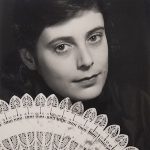
![Naomi Savage, Untitled [ice covered three limbs]](https://www.baahng.com/imgs/elementor/thumbs/iced_treeLimb_Naomi_Savage_Baahng-oot1i50wbvcd4w3psrj2xc96sa5917x4442haejzeo.jpg)
![Naomi Savage, Untitled [Multi colored gloves]](https://www.baahng.com/imgs/elementor/thumbs/MultiColoGloves_Naomi_Savage_Baahng-oot1i6wkpjexs40zhscc2bs3z1vzgm4ksddg8yh728.jpg)
![Naomi Savage, Untitled [Smiling Marcel Duchamp and Man Ray]](https://www.baahng.com/imgs/elementor/thumbs/smailing_Duchamp_ManRay_Naomi_Savage_Baahng-oot1ianxgvk32jvivtyucatycldgbeji4vze62bmdc.jpg)
![Naomi Savage, Untitled [abstract]](https://www.baahng.com/imgs/elementor/thumbs/Abstract_Naomi_Savage_Baahng-oot1i0bpdp5xiuajk7hy2vfvtcseyqegfgt1w0qy9s.jpg)
![Naomi Savage, Untitled [Marcel Duchamp and Man Ray]](https://www.baahng.com/imgs/elementor/thumbs/Duchamp_ManRay_Naomi_Savage_Baahng-oot1i27drd8i627t98b77uyt04j5e4lx3q40uko5xc.jpg)
![Naomi Savage, Artists All [Duchamp/Man Ray/David Savage]](https://www.baahng.com/imgs/elementor/thumbs/DuchampManRaySavage_Naomi_Savage_Baahng-oorc12ufh7tw80p3innmwaqwug1fbr80uhahqdvr40.jpg)
